
Key to Korean Motivation & Resources for Learning Korean

Need to fill out a Korean Resume? Here’s everything you need to know (in Korean).
One of our readers recently asked me to find out everything I could about Korean resumes because she needs to fill one out. So I did.
Here’s some great info to get you started:
Best Search Term: 이력서 작성방법 (How to Create a Resume) OR simply: 이력서 (Resume)
Types of Resumes:
My wife has told me that in Korea, there are basically 3 types of Resumes:
- A generic resume (good for any job) = 이력서
- A resume for public servants and teachers = 공무원 이력서
- Specialized, creative resumes designed by the applicant themselves
The first two types of resume can be found to Download from many locations online (and I’ve linked to a few below). They can also be purchased in any bookstore.
The third resume type is quite uncommon and would probably only be used if applying for a job like Google or some other specialized company. But even in that case, a generic 이력서 would probably be accepted as well.
Top 3 most relevant How-To posts here:
- 서울특별시 고령자취업알선센터 > 이력서 작성요령 *(Seoul City Elderly Job Placement Center > How to Create a Resume)
- 대구광역시 동구 > 취업가이드 > 이력서 작성요령 (Daegu Metropolitan City > Job Guide > How to Create a Resume)
- 고용노동부 한국고용정보원 >이력서 작성요령 (Korea Ministry of Employment and Labor > How to Create a Resume)
Downloadable Files here (HWP):
- 박하사탕의 블로그: 이력서 양식 HWP 다운(첨부 파일) *(Peppermint Candy’s Blog: HWP Download Forms (Attached File))
- 울산과학기술대학교 취업지원센터 > 이력서 표준양식 50선 – 자기소개서 작성가이드 (Ulsan National University of Science and Technology Career Development Center > 50 Standard Form CVs and Written Personal Statement Guide)
The one from Ulsan University is incredibly extensive. As you can see here, it even includes resume examples in Chinese and English:

Peppermint Candy’s blog provides 6 simple forms:
- The Most Simple Resume
- Superior Simple Resume (with some additions)
- An Additions Page for added experience
- The Korea Ministry of Employment and Labor’s Most Recommended Resume form
- The Most Commonly Used Application/Resume form
- A Basic Self-Introduction form
I will go over EACH of these in more detail in a later post.
Creating a Self-Introduction:
- 국가보훈처 > 자기소개서 작성방법 (Ministry of Patriots and Veterans Affairs > How to Create a Self-Introduction)
- 부자병법 블로그: 자기소개서 작성요령 *(The Rich Man’s Art of War Blog: How to Create a Self-Introduction)
Resume Writing Tips:
- 프루덴셜 스토리 > 취업과 이직을 위한 현명한 이력서 작성 관리 노하우 *(Prudential Story > Smart Resume for employment and turnover management know-how)
The story from Prudential here gives tips for Resume writing for all kinds of different job seekers:
- Entry-level, no experience resumes (be as concise as possible)
- Low-level, with experience resumes (focus on your growth)
- High-level, experienced resumes (emphasize past results – show how you’re a good fit)
Korean Job Seeker Series
Because the above entries look to contain a great deal of excellent information about how to PREPARE for a job in a Korean company (and since I eventually want to do just that), over the course of the next few weeks and months, I will progressively get to work translating some of these to help our readers (and myself) learn more about what it’s like to apply for Korean jobs in Korea. The starred (*) entries above are the first ones I will work on translating.
As time goes on, and as my experience allows, I will continue adding to the Korean Job Seeker series with additional topics about:
- Job Interview Tips
- Korean Presentation Skills
- Getting Your First Korean Job
- The Korean Job Experience
And so on. Many of those topics may take years to write. It all depends on my own personal progress toward those ends.
But for now, I hope this post has provided some good resources to get you started. Stay tuned for next week when I translate the first How-To Create a Resume article from the Seoul City Elderly Job Placement Center . And I’ll try to translate the 6 forms provided by Peppermint Candy as soon as possible as well.

Share this:
One of our readers recently asked me to find out everything I could about Korean resumes because she needs to fill one out. So I did. Here’s some great info to get you started: Best Search Term: 이력서 작성방법 (How Continue reading Need to fill out a Korean Resume? Here’s everything you need to know (in Korean).
Explore Avengers 2 Filming Locations in Seoul with Naver Street & Sky View Maps
Pretty exciting! Avengers 2 will be filming some major battle scenes and in key locations in Seoul beginning THIS Sunday! Someone I know from Jeonju will also be involved in the filming. Sounds like a fun time. The studio plans Continue reading Explore Avengers 2 Filming Locations in Seoul with Naver Street & Sky View Maps
Hands down the BEST way to transfer money home from Korea
Want to transfer money home? So, you want to transfer money home do you? You’ve really only got 3 options: Go to your “home” bank (set up by your school), fill out the paperwork (every time) and transfer money home. Continue reading Hands down the BEST way to transfer money home from Korea
You can buy those printed resume forms and special envelope in Daiso, for about 1,000원!
great great blog by the way!
Thanks for the info. I’ve definitely seen them around. I know you can also find them online in other places to print yourself if you want. But it’s nice to know that you can get them with special envelopes in Daiso as well!
- Pingback: How To Fill Out A Resume – Company Resume
Leave a Reply Cancel reply
This site uses Akismet to reduce spam. Learn how your comment data is processed .
Discover, Learn, Contribute, Connect
How to Say “Resume” in Korean: A Comprehensive Guide
Welcome to our comprehensive guide on how to say “resume” in Korean! Whether you’re planning to visit Korea for work or are simply interested in expanding your language skills, understanding the various ways to express “resume” in Korean can be immensely helpful. In this guide, we’ll cover both formal and informal phrases, and touch upon any regional variations if necessary. So let’s dive in!
Table of Contents
Formal Ways to Say “Resume” in Korean
When it comes to formal situations, such as job applications and professional settings, it is important to use appropriate and polite vocabulary. Here are a few formal phrases you can use:
1. 이력서 (Ilyeokseo): This is the most commonly used term for “resume” in Korean. It is polite and widely recognized in formal settings.
Example: “저의 이력서를 보내 드리겠습니다.” (Jeoui ilyeokseoreul bonae deurigessseubnida) – “I will send you my resume.”
2. 자기소개서 (Jagisogaeseo): This term refers specifically to a “self-introduction letter” or “application letter.” It is often used interchangeably with 이력서, but it emphasizes the content and purpose of the document.
Example: “자기소개서를 작성해야 합니다.” (Jagisogaeseoreul jaksunghaeya hamnida) – “You need to write a self-introduction letter.”
Informal Ways to Say “Resume” in Korean
When it comes to informal situations, such as casual conversations or friendly exchanges, you can use the following phrases:
1. 이력표 (Ilyeokpyo): This term is a less formal way to say “resume” in Korean. It is often used among friends or acquaintances.
Example: “이력표를 준비하셨어요?” (Ilyeokpyo-reul junbihasyeosseoyo?) – “Did you prepare your resume?”
2. 자료 (Jaryo): This term translates to “document” or “material” and is a more casual way to refer to a resume.
Example: “이 자료 좀 봐 주세요.” (I jaryo jom bwa juseyo) – “Please take a look at this document (resume).”
Additional Tips and Examples
Here are some additional tips and examples to help you navigate the various contexts in which you may need to use the word “resume” in Korean:
- Context Matters: It’s important to consider the formality of the situation when choosing the appropriate word for “resume.” In professional settings, it’s generally safer to stick with 이력서 or 자기소개서.
- Written and Spoken Forms: Both 이력서 and 자기소개서 can be used for written and spoken forms, making them versatile options across different mediums.
- Conversational Tone: While 이력표 and 자료 are more casual, they still convey the meaning of “resume” in an informal conversation.
- Ask for Clarification: If you’re unsure about which term to use, don’t hesitate to ask for clarification. Koreans are generally understanding and are willing to help.
Example: “죄송하지만, 이력서와 자기소개서 중에 어떤 걸 사용해야 합니까?” (Joesonghajiman, ilyeokseo-wa jagisogaeseo junge eotteon geol sayonghaeya hamnikka?) – “I’m sorry, but between a resume and a self-introduction letter, which one should I use?”
By familiarizing yourself with both formal and informal phrases, you’ll be prepared to express “resume” in various situations and adapt to your conversation partner’s level of familiarity.
Remember, language learning is an ongoing process, and every opportunity to practice and expand your vocabulary is valuable. So don’t be afraid to experiment and learn from your interactions!
We hope this guide has provided you with a better understanding of how to say “resume” in Korean. Happy learning!
Related Guides:
- How to Say “Attached Resume” in an Email
- How to Include “Attending Meetings” on Your Resume
- Tips for Describing “Cleaned” on Your Resume
- How to Showcase Note Taking on Your Resume
- How to Include Teamwork Skills on Your Resume
- How to Convey Your Ability to Work in a Fast-Paced Environment on Your Resume
- How to Say “You Stock Shelves” on a Resume
- Guide: How to Highlight Fast Typing Skills on a Resume
About The Author
Sienna Diane

South Korean Resumes & Cover Letters

Demystifying Korean Resumes and Cover Letters: A Comprehensive Guide
Understanding the standards and practices for Korean resumes and cover letters is crucial when looking for jobs in South Korea. These records are essential for demonstrating your abilities, background, and suitability for a job. We will provide you a thorough overview of Korean resumes and cover letters in this article, giving you the information and resources you need to produce polished and successful application materials.
Resume Format:
Korean resumes often adhere to a particular format. Start with a quality head shot of yourself, then include your name, contact information, and a succinct self-introduction. Include areas that highlight your schooling history, professional background, talents, certifications, and language fluency. Be careful to start with the most current experience or qualification when listing your experiences and education.
Concise and Well-Ordered:
Korean resumes need to be clear and organized. Limit the length of your resume to one or two pages, and concentrate on pertinent and useful content. To emphasize important accomplishments and duties in your past employment, use bullet points. Make sure your resume is simple to read and visually appealing by using distinct headings and a standard structure.
Academic Background:
Academic accomplishments are highly valued in Korean resumes. Include information about your academic institutions, degree programs, majors, graduation dates, any accolades or awards received in school. If applicable, include a brief description of your thesis or research. In order to distinguish out from other applicants, highlight any famous programs or colleges you have attended.
Work Experience:
Highlight your achievements and responsibilities in each capacity when describing your prior employment. Highlight any measurable accomplishments, projects you worked on or outcomes you produced. To illustrate your abilities and the influence you had in your past roles, use action verbs and precise examples. Provide references from your former employers or bosses, if you can.
Language Proficiency:
Fluency in the Korean language is highly valued in a variety of job fields. Indicate your degree of Korean proficiency, including native, fluent, intermediate, and basic. Include any language certifications, such as the TOPIK (Test of Proficiency in Korean) certificate, in your resume to attest to your proficiency in the language.
Cover Letter:
Korean cover letters, known as “자기소개서” (self-introduction letters), provide you the chance to go into more detail about your qualifications and explain why you are applying for a particular employment. Introduce yourself with a polite salutation. Describe your reasons for becoming interested in the job and the organization, as well as how your qualifications match those needed for the role. Show off your understanding of the business and express your excitement for helping it succeed.
For the best chance of success on the South Korean job market and to effectively present your qualifications, you must create a well-designed Korean resume and cover letter. You can show yourself as a strong and competitive applicant by adhering to the suggested structure, stressing your educational history and professional experience, highlighting language competence, and producing an effective cover letter. Always remember to customize your application materials for each unique employment opportunity and to speak in a respectful and professional manner at all times. With these tips and pointers, you’ll be able to successfully negotiate the nuances of Korean resumes and cover letters and leave a good impression on prospective employers.
Contact for Consultation
Life in Korea

Must-Go BTS Destinations in Gangnam

The Shopping Experience in Hongdae

The Thrilling Experience of Baseball in Korea

Visiting COEX Aquarium!

Norae Bangs(노래방) in Korea

Exploring K-Beauty: A French Perspective on Korean Skincare Trends
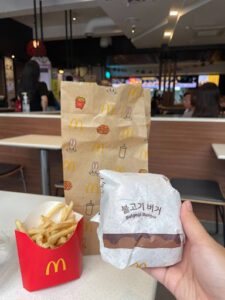
Western Establishments in South Korea

Celebrating BTS 10th Year Festa in Seoul!
KoreaAgain(코리아어게인) is the brand of DIOKOS Inc.
Company Registration # : 449-81-03083
통신판매업 신고번호 : 2024-화성봉담-0070호
How to Write a Resume in Korean
Learn how to write an effective resume in Korean with our comprehensive guide. Discover the essential items to include and get tips to make your resume stand out to Korean employers.
Chris Teacher
Writing a resume in Korean can be quite different from writing one in your native language. Korean resumes have specific items that are considered essential, and understanding these can help you create an effective and attractive resume for potential employers. As a Korean HR manager and job consultant, I'm here to guide you through the process with practical tips and advice. 😊
Also, please refer to my other blog posts about jobs available to foreigners in Korea.
Essential Items Included in a Korean Resume
성명 (Name) Your full name should be written clearly at the top of your resume. Ensure that it's easily readable and matches the name on your official documents.
학위 (Degree) List your educational qualifications, starting from the most recent. Include the degree, the institution's name, and the dates of attendance.
연락처 (Contact Information) Provide your phone number and email address. Make sure these are up-to-date and that you check them regularly.
주소 (Address) Include your current address. This helps employers understand your location and any potential commute.
생년월일 (Date of Birth) In Korea, it is common to include your date of birth on your resume. This helps employers understand your age and experience level.
경력 (Work Experience) Detail your work history, starting with the most recent position. Include the job title, company name, duration of employment, and a brief description of your responsibilities and achievements.
학력 (Education) Detail your educational background. Start with your highest degree and work backward. Include the institution's name, degree earned, and graduation date.
자격증 (Certificates) List any relevant certifications or qualifications that may support your application. Include the name of the certificate, the issuing organization, and the date obtained.
자기소개서 (Self-Introduction) This is a short paragraph where you introduce yourself, your career goals, and why you are a good fit for the job. It's an opportunity to showcase your personality and enthusiasm.
기타 (Others) You can include other sections such as skills, languages, and hobbies. These sections can provide additional insight into your capabilities and interests.
Tips to Create a More Attractive Korean Resume
To improve your Korean overall, you need to study reguarly . But here are some tips for people who need to write a resume right now.
Use Formal Language Using polite and formal language throughout your resume is crucial. It shows respect and professionalism, which are highly valued in Korean culture.
Be Concise and Clear Keep your resume concise and to the point. Avoid unnecessary details and focus on the most relevant information. Employers appreciate clarity and brevity.
Highlight Relevant Experience Make sure to emphasize your experience that is most relevant to the job you are applying for. Tailoring your resume to match the job description can significantly increase your chances of getting noticed.
Customize for Each Job Application While it might be tempting to use the same resume for multiple applications, customizing it for each specific job can make a big difference. Highlight the skills and experiences that are most relevant to each position.
Include Keywords from Job Descriptions Using keywords from the job postings in your resume can help it stand out. Employers often use software to scan resumes for specific terms, so including these can increase your chances of getting selected for an interview.
Professional Layout and Design A clean and professional layout can make your resume more attractive. Use a simple font, consistent formatting, and clear headings to ensure your resume is easy to read.
Creating an effective Korean resume involves including the right items and presenting them in a professional manner. By following these tips, you can make your resume stand out and increase your chances of landing your desired job. Here are another blog's post you can refer to . 😊
Enhance Your Resume Writing with Our AI Program
To further enhance your Korean resume writing skills, consider using our AI writing practice program. This program includes comprehensive video lectures on " How to Get High Scores on TOPIK: Writing Skills. " It offers personalized feedback tailored to your needs, helping you refine your writing and overall Korean language proficiency. Regular practice with this tool can significantly improve your resume and prepare you for the job application process in Korea. 🚀
TOPIK 쓰기 점수가 낮은 이유
AI 토픽 쓰기 연습 프로그램으로 TOPIK 연습, AI 쓰기 선생님, JAEM TOPIK으로 토픽 쓰기 점수를 높이세요.
토픽 6급 연습문제가 많은 JAEM TOPIK
JAEM TOPIK과 함께 토픽 6급을 받아보세요. 토픽 연습문제, 모의고사로 계속 연습하고 무제한 피드백을 받으세요.
Study with JAEM TOPIK: Practice with Many Mock Tests
Discover why JAEM TOPIK is the best choice for TOPIK preparation. Practice with various mock tests and get personalized feedback to enhance your Korean language skills.
Why JAEM TOPIK? The Ultimate Solution for TOPIK Preparation
Discover why JAEM TOPIK is the best choice for preparing for the TOPIK test in 2024. Learn how our AI tutor and personalized feedback can help you achieve TOPIK Level 6.
Shopping Cart
No products in the cart.
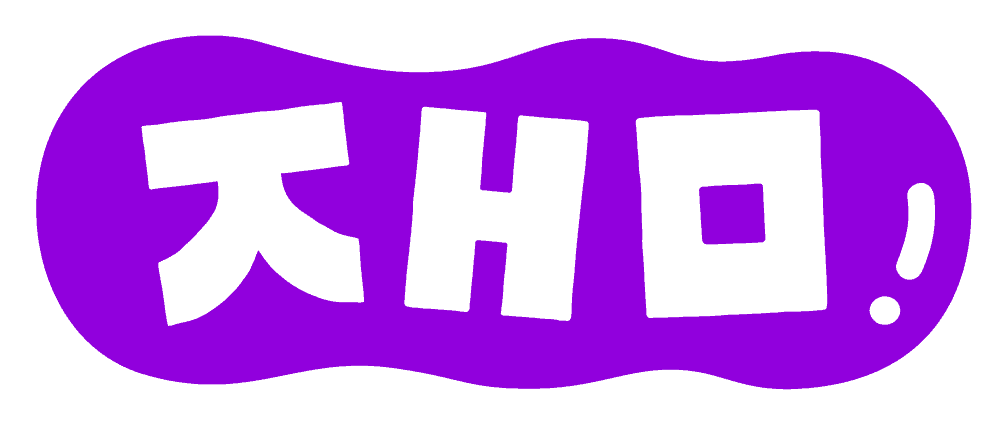
Korean Resumes & Cover Letters: A Complete Guide
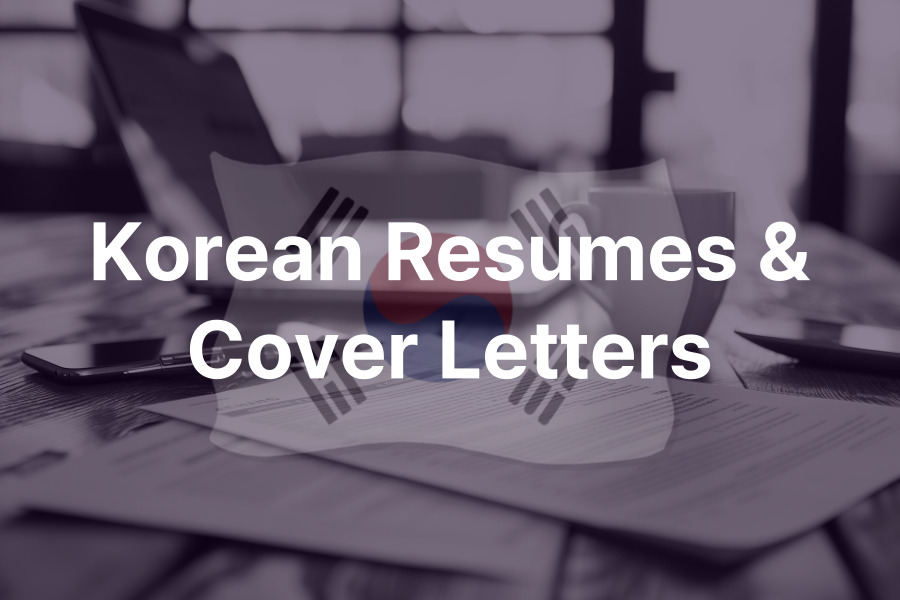
Understanding the standards and practices for Korean resumes and cover letters is crucial when looking for jobs in South Korea. These documents are essential for demonstrating your abilities, background, and suitability for a job. Let’s dive into the key elements and differences to help you create polished and successful application materials. 📄✨
Understanding Korean Resumes
You can see the documents here .
Standard Format
Korean resumes often adhere to a particular format. Start with a quality headshot of yourself, then include your name, contact information, and a succinct self-introduction. Include sections that highlight your education history, professional background, skills, certifications, and language proficiency. Always list your most recent experiences and qualifications first.
Concise and Well-Ordered
Korean resumes need to be clear and organized. Limit the length to one or two pages, and focus on relevant and useful content. Use bullet points to emphasize key achievements and responsibilities in your past jobs. Ensure your resume is easy to read and visually appealing by using distinct headings and a standard structure.
Importance of Academic Background
Academic accomplishments are highly valued in Korean resumes. Include details about your academic institutions, degree programs, majors, graduation dates, and any awards or honors received. If applicable, provide a brief description of your thesis or research. Highlight any prestigious programs or universities you have attended to stand out from other applicants.
Highlighting Work Experience
When describing your previous jobs, focus on your achievements and responsibilities in each role. Highlight any measurable accomplishments, projects you worked on, or results you produced. Use action verbs and specific examples to demonstrate your skills and the impact you had in your previous positions. Provide references from your former employers or supervisors if possible.
Indicating Language Proficiency
Fluency in the Korean language is highly valued in various job fields. Indicate your level of Korean proficiency, including native, fluent, intermediate, and basic. Include any language certifications, such as the TOPIK (Test of Proficiency in Korean) certificate, to attest to your proficiency in the language. 🏅
If you want to learn how to write a resume and cover letter in Korean and learn Korean interview skills, we recommend the following brands: Chapter Korean’s Business Korean Class
Crafting Effective Korean Cover Letters
Purpose and importance.
Korean cover letters, known as “자기소개서” (self-introduction letters), provide you the chance to go into more detail about your qualifications and explain why you are applying for a particular job. A well-written cover letter can complement your resume and make a strong impression on potential employers.
Structure and Content
Start with a polite salutation. Introduce yourself and explain your interest in the job and the company. Describe how your qualifications match the requirements of the role. Highlight specific experiences or skills that make you a good fit. Conclude with a polite closing, expressing your enthusiasm for the opportunity and your readiness to contribute to the company’s success.
Showing Enthusiasm and Fit
Show off your understanding of the business and express your excitement for helping it succeed. Mention any research you’ve done about the company and how it aligns with your career goals. Demonstrating genuine interest and knowledge about the company can set you apart from other candidates. 🌟
Key Differences Between Korean and Western Resumes & Cover Letters
Format and structure.
Korean resumes are typically more structured and follow a specific format. Western resumes might allow for more creativity and personal style, while Korean resumes emphasize uniformity and clarity.
Emphasis on Academic Achievements
Academic background is given more importance in Korean resumes compared to Western ones. Including detailed information about your education can significantly strengthen your application.
Length and Detail
Korean resumes and cover letters are generally more concise. It’s important to keep your documents short, focusing only on relevant and impactful information.
Cultural Considerations
Respect and professionalism are highly valued in Korean culture. Ensure your resume and cover letter reflect this through formal language and a respectful tone. Avoid overly casual language or expressions. 🙇♀️
Tips for Success
Customizing for each job.
Tailor your resume and cover letter for each job application. Highlight the most relevant experiences and skills that match the job description. This shows employers that you’ve put effort into your application and are genuinely interested in the role.
Professional Tone and Language
Maintain a professional tone throughout your resume and cover letter. Use clear and concise language, and avoid slang or overly casual expressions. Ensure your documents are free of errors by proofreading them carefully.
Visual Appeal and Clarity
Make sure your resume is visually appealing and easy to read. Use a clean, professional layout with clear headings and bullet points. Avoid clutter and keep your design simple. A well-organized resume can make a strong first impression. 📑✨
Creating a well-designed Korean resume and cover letter is crucial for success in the South Korean job market. By following the suggested format, emphasizing your educational background and professional experience, highlighting language proficiency, and crafting an effective cover letter, you can present yourself as a strong and competitive applicant. Always remember to customize your application materials for each unique job opportunity and to maintain a respectful and professional tone. With these tips and pointers, you’ll be able to navigate the nuances of Korean resumes and cover letters and make a great impression on potential employers. Good luck! 🍀
Also, Download JAEM Korean app to learn Korean yourself!
You must be logged in to post a comment.
Read Other Posts
Understanding korean grammar: -아/어서, understanding korean grammar: -겠어요, understanding korean grammar: -시겠어요.

Understanding Korean Grammar: -을까 하다

Understanding Korean Grammar: -습니다
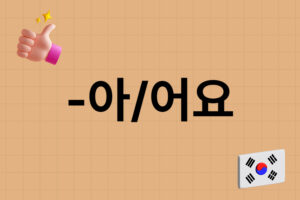
Understanding Korean Grammar: -아/어요

Understanding Korean Grammar: -을 거예요
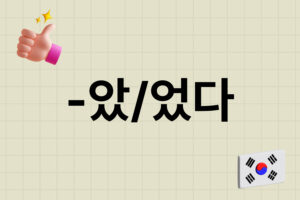
Understanding Korean Grammar: -았/었다 for Past Tense

Understanding Korean Grammar: -아/어 두다

Understanding Korean Grammar: Using -아/어 놓다

주식회사 챕터코리안, 대표 김대광 | 사업자등록번호 : 471-88-02872 통신판매업신고번호 : 제2024-서울중구-1387호 | 서울 퇴계로 36길 2 812호 대표번호 : +82-70-8098-4359 | 직통번호 : +82-10-3366-9034 | 이메일 : [email protected]
There was a problem reporting this post.
Block Member?
Please confirm you want to block this member.
You will no longer be able to:
- See blocked member's posts
- Mention this member in posts
- Invite this member to groups
Please allow a few minutes for this process to complete.
Table of Contents
The best app for studying Korean on your own. Free lectures, unlimited feedback, premium courses, challenges (click) >
Customer Support
Register/Login
Register / Login
Korean resume guideline & smaples- 7 things you must write.
- Chapter Korean Eva
- February 29, 2024

Table of Contents
Welcome! Securing a job in Korea is a significant milestone, and crafting an excellent Korean resume is a crucial first step in this process In our post, “Korean Resume Guideline & Samples – 7 Things You Must Write!” we aim to provide essential guidelines for foreigners aspiring to work in Korea. This guide will help you create an effective resume that captures the attention of Korean employers and leaves a lasting impression.
Additionally, preparing for interviews is equally important in the job application process. Our other blog post, “Learn the Most Common Korean Job Interview Questions” introduces frequently asked questions in Korean job interviews and offers advice on formulating model answers. This preparation can significantly boost your confidence during the interview.

A Korean resume does more than list your experiences; it showcases your professionalism, passion, and compatibility with Korean corporate culture. Therefore, understanding how to structure each section of your resume and what information to include is crucial. Let’s dive into the essential principles for writing a Korean resume that can help you step closer to your dream job in Korea.
Basic Structure of a Korean Resume Guideline
A Korean resume serves as a vital tool to highlight your professionalism and individuality. An effective resume typically follows this basic structure:
- Personal Information: Ensure your basic information such as name, contact number, and email address is accurately provided. Use current information to make it easy for employers to reach you.
- Educational Background: List your educational history in reverse chronological order, including degrees, majors, and graduation dates. Highlight relevant courses or activities that align with the job you’re applying for.
- Career History: Start with your most recent job and work backward. Detail your responsibilities and achievements for each position, focusing especially on projects or contributions relevant to the job you’re seeking.

7 Essential Principles to Follow
– korean resume guideline –.
- Your resume is often reviewed quickly, so convey key information through simple and understandable language. Avoid complex terms unless necessary and aim for brevity in your descriptions.
- Accurate contact details are crucial for potential employers to reach out to you. Ensure your email and phone number are updated and consider using a professional email address.
- Education should be listed from most recent to oldest, highlighting your career in reverse order as well. When describing career experiences, emphasize the tasks and accomplishments that showcase your suitability for the position. F For instance, if applying for a marketing role, mention specific marketing projects or achievements.
- Focus on experiences and skills directly related to the position you’re applying for. If you’re an IT professional, highlight your programming skills, development projects, and other relevant expertise.
- Elaborate on experiences related to the specific job, roviding examples and outcomes to demonstrate your capabilities. Design applicants, for example, can include portfolio links to show their work and detail their contributions to each project.
- Incorporate keywords found in the job description into your resume. This strategy helps your resume get identified more easily by ATS systems and strengthens its relevance to the job.
- Steer clear of excessive design elements and unnecessary personal information. Ensure the focus remains on clarity and professionalism. Additionally, personal information such unneccesary thing should be exception for profesional resume.
Follow our expert advice to prepare a Korean resume that highlights your unique strengths and aligns with employer expectations, setting you on the path to career success in Korea.

Writing a Korean resume guidlines with is a pivotal step towards landing a job in Korea. Through the principles outlined in “Korean Resume Guideline & Samples – 7 Things You Must Write!”, we’ve aimed to equip you with the knowledge to craft a resume that not only catches the eye of Korean employers but also effectively communicates your strengths and fit for the role. Each section of your resume should be carefully constructed to highlight your professional achievements, experiences, and the unique value you bring to the company.

The resume is your first opportunity to make a strong impression on potential employers. Thus, it’s crucial to convey your professionalism, achievements, and passion for the job effectively through your resume. By following the guidelines provided, reviewing your resume thoroughly, and seeking feedback for improvements, you can enhance your competitiveness in the Korean job market.
Embarking on a career in Korea can be a significant advancement in your professional journey, and a well-prepared resume is the starting point. e hope this post serves as a valuable guide on your path to employment in Korea. We sincerely wish you success in your job search and future career endeavors in Korea.
Additional Information:Resources at ‘Chapter Korean’
The ‘Chapter Korean’ team has extensive experience in TOPIK group classes, self-introduction editing, and business Korean. The expertise of the Chapter Korean team greatly contributes to helping students improve their language and document writing skills, which are essential for employment in Korean companies.
Classes related to this special lecture can be found on the Chapter Korean official website and provide additional tips and guidance on writing personal statements and resumes. This website is a platform where students can easily access and utilize various materials and information necessary for employment in Korean companies, and will be of great help in continuous learning and preparation. You can also receive a lot of Korean information and self-introduction feedback through the JAEM Korean app.
Social Share:
Related post.

Korean job interview dos & dont’s!

5 nearly perfect job interview answers
Take our 1:1 classes and practice speaking korean..

1:1 tutoring 16 classes ticket

1:1 tutoring 8 classes ticket

1:1 tutoring 24 classes ticket

1:1 tutoring trial class
CHAPTER KOREAN
Download JAEM Korean app
주식회사 챕터코리안, 대표 김대광 | 사업자등록번호 : 471-88-02872 | 통신판매업신고번호 : 제2024-서울중구-1387호| 서울 퇴계로 36길 2 812호 대표번호 : +82-70-8098-4359 | 직통번호 : +82-10-3366-9034 | 이메일 : [email protected] 이용약관 | 개인정보처리방침 | Cookie Settings Copyright 2023 © ChapterSeoul

How to write a resume in Korean
- October 25, 2021 08:33

There are many job opportunities in South Korea, but first, you’ll need to learn how to make a Korean resume. Some companies require both English and Korean resumes, Ziptoss will guide you in making your Korean resume.
Why is a Korean resume important?
English resumes are usually reviewed by any foreign employees of the company and Korean resumes will be used by Korean human resources and recruitment departments to record your qualifications in their internal systems. Your Korean resume is also what they will be passing around to company directors and managers for your interview.
The resume format in South Korea is different from an English resume. A Korean resume will only need basic facts and information about you, it also doesn’t require any references or further explanation of your credentials. It’s much simpler and it saves a lot of time and stress.
Table of Contents
Error — JavaScript not Loaded
You need to enable JavaScript to use the Memrise web product. We also have iOS and Android apps that we highly recommend.
- Learn Korean
- Korean Course
- Korean Phrasebook
How do you say resumé; CV in Korean?

Related words and phrases:

Search for #content you enjoy

카테고리 이동 Info Buffet
The korean resume - part 2.
2013. 10. 22. 17:05
- 본문 폰트 크기 조정 본문 폰트 크기 작게 보기 본문 폰트 크기 크게 보기 가
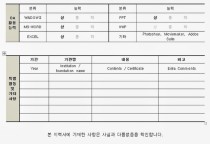
Applying for a job in South Korea? This Korea resume guide has the templates, tips, examples, and format requirements needed to write the perfect resume.
If you’ve been applying for jobs in South Korea as a foreign worker with no results, the problem might not be you. It could be your resume. With a busy and vibrant work culture (especially in metropolitan Seoul), it can be difficult for a foreign worker to stand out amongst their competition – or worse, they stand out in a bad way with a resume that isn’t aligned with the standards and expectations of Korean hiring managers.
If you’re wondering how to optimize your resume for Korea, you’re in luck: we’ll go over Korean resume formats and provide several examples of Korean resumes to get your job search back on track.
The 3 Popular Korean Resume Formats
In most countries, you’ll find three main types of resume format mentioned. That means when it’s time to create your resume, you’ll need to choose between those three resume formats: reverse chronological, functional, or combination.
But what exactly does that mean? What makes any of those different? And how do you know which of them is best for you and your goals?
Let’s break the 3 popular Korea resume formats down.
Is a Reverse Chronological Format Right for Your Korean Resume?
Reverse chronological resumes are the most popular and most common resume format – in Korea and internationally. You more than likely already have experience with this type of resume. You might even already have a reverse chronological resume ready to go!
As the name suggests, a reverse chronological resume focuses on your work experience, and details this information in reverse chronological order – meaning your most recent or current job is listed first. Hiring managers like reverse chronological resumes because they can easily understand what you’ve been doing and what results you’ve achieved at your previous roles. A reverse chronological resume is usually the best option for any Korean resume, because the format is somewhat universal.
Is a Functional Format Right for Your Korean Resume?
Where a reverse chronological resume highlights your work experience, functional resumes place focus on your skills. These resumes are often used in speciality industries where an exact skillset or certification is a requirement. Hiring managers in those industries are more open to functional resumes because they allow them to see your skills more quickly and easily, meaning they can identify whether you’d be a good fit for the job more efficiently.
While functional resumes certainly have their place in many job searches, they aren’t a typical resume format for Korea. Unless the job posting specifically asks for a functional resume, you’re likely better off opting for a reverse chronological resume.
Is a Combination Format Right for Your Korean Resume?
As the name suggests, a combination resume combines the reverse chronological and functional resume by highlighting which skills you gained at each stage of your career journey. These resumes can be useful because they explain your skills to the hiring manager, rather than simply listing them in a separate section of the resume.
How to Write a Korean Resume
The format for a Korean resume is similar to most resume formats in the Western world. If you’re from the US or Europe, for example, and you’ve already written a resume, turning your resume into a Korean resume should be fairly straightforward.
But what if you’ve written your Korean resume and you aren’t getting any responses from employers? It might not be an issue with the format of your resume, but with the content. Let’s take a look at the typical Korean resume sections and how to optimize your Korean resume for the best results.
Work Experience Format for a Korean Resume
In most resumes, your work experience section is the most important part of your resume: this is where you demonstrate the impact you can bring to a company, and it’s more than likely the first place a hiring manager will look when they first scan your resume. In short, if your work experience section is lacking, you’ll find it extremely difficult to make it to even an initial screening stage interview.
So how do you make sure your work experience catches a hiring manager’s eye? Generally, the key is to include metrics – especially numbers. Whenever possible, tell the hiring manager exactly how you improved each workplace you’ve had. Including things like increasing revenue or another metric by a specific percentage, for example, is an excellent way to quickly set yourself apart.
Korean Resume Summary Format
A resume summary should be concise and to the point. Generally speaking, you can use the following format to write your Korean resume summary:
- Begin with your job title or position, including years of experience you have more than 5
- Follow with a brief statement summarizing your experience, expertise, and career goals
- End with your most recent relevant achievements and skills
A summary that follow this format would look something like this:
Creative and versatile graphic designer with over 10 years of experience bringing brands to life through compelling visual storytelling. Proficient in Adobe Creative Suite, with expertise in Illustrator, Photoshop, and InDesign. Skilled in conceptualizing and executing designs for print, digital, and multimedia platforms, including logos, branding, marketing collateral, and website graphics. Strong eye for detail and a passion for typography, color theory, and layout composition. Proven ability to collaborate closely with clients to understand their vision and deliver designs that exceed expectations. Highly organized with a strong ability to manage multiple projects simultaneously and thrive in fast-paced environments.
Format to List Skills on Your Korean Resume
When listing your skills on your Korean resume, you can usually opt to simply list each relevant skill within your resume template. VisualCV’s resume templates include skill bars for each skill, so you can indicate your level of experience or proficiency with each skill.
While your skills section doesn’t need to go in-depth, it’s actually one of the most important parts of your resume – especially when it comes to ATS software. Applicant Tracking Systems look for specific keywords in resumes, filtering the best of the bunch to the next step (usually, being seen by an actual hiring manager). Carefully read each job description, looking for the exact skills (such as softwares, certifications, or other specific requirements) listed. Then, be sure each of those skills are clearly listed in your skills section!
10 Korean Resume Examples
Korean resume example for data engineering.
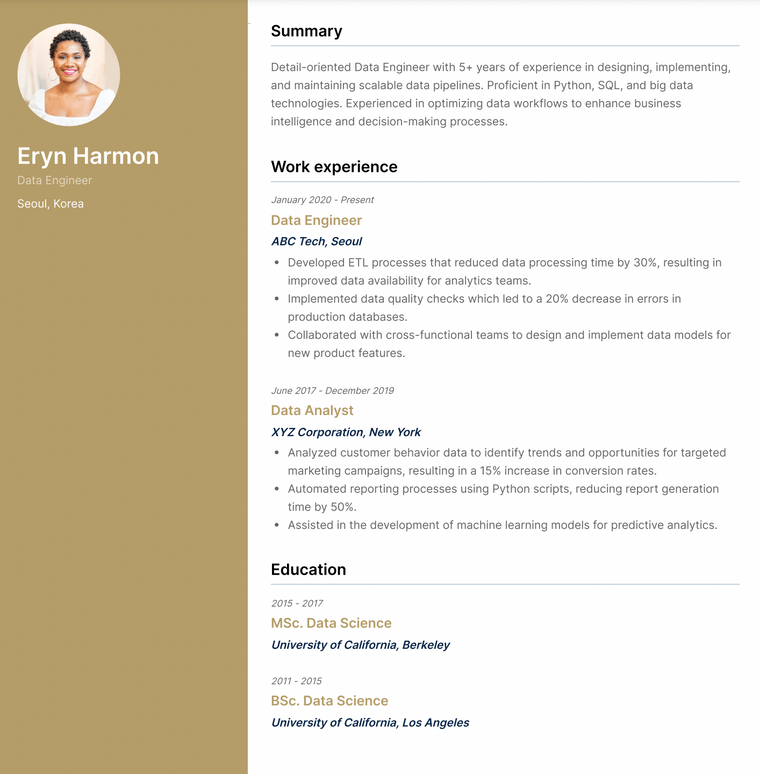
Sales Korean Resume Example
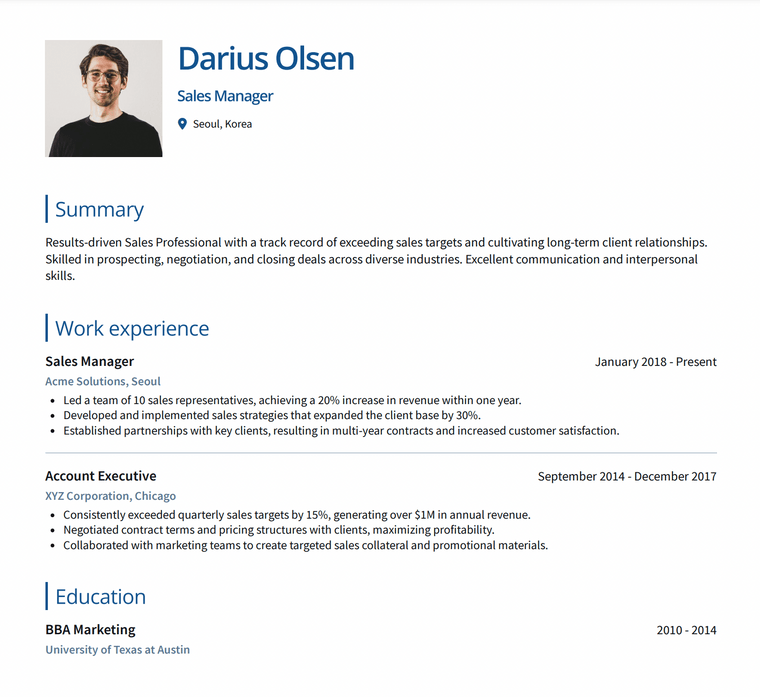
Korean Resume Example for Accountants
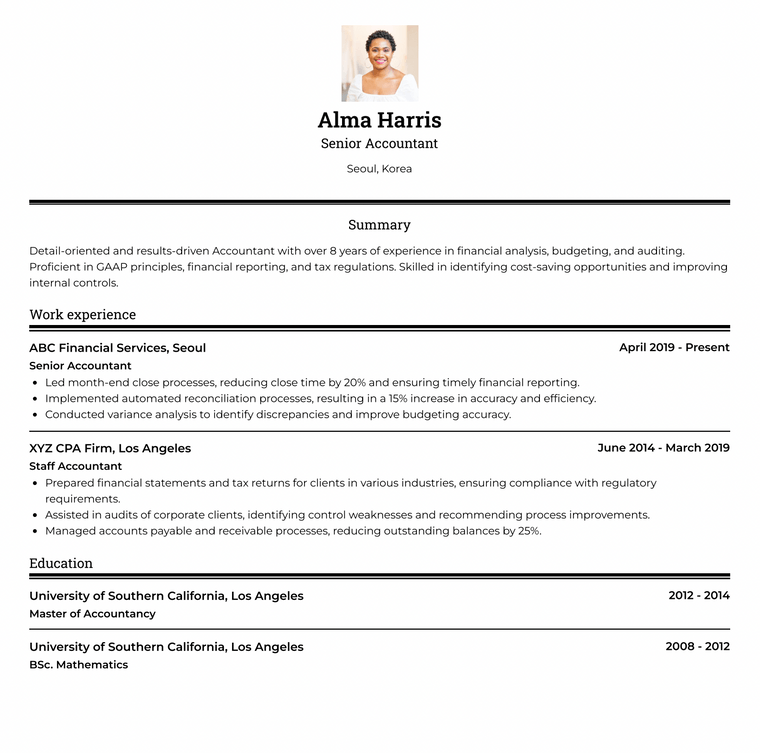
Writer Resume Example for Korea
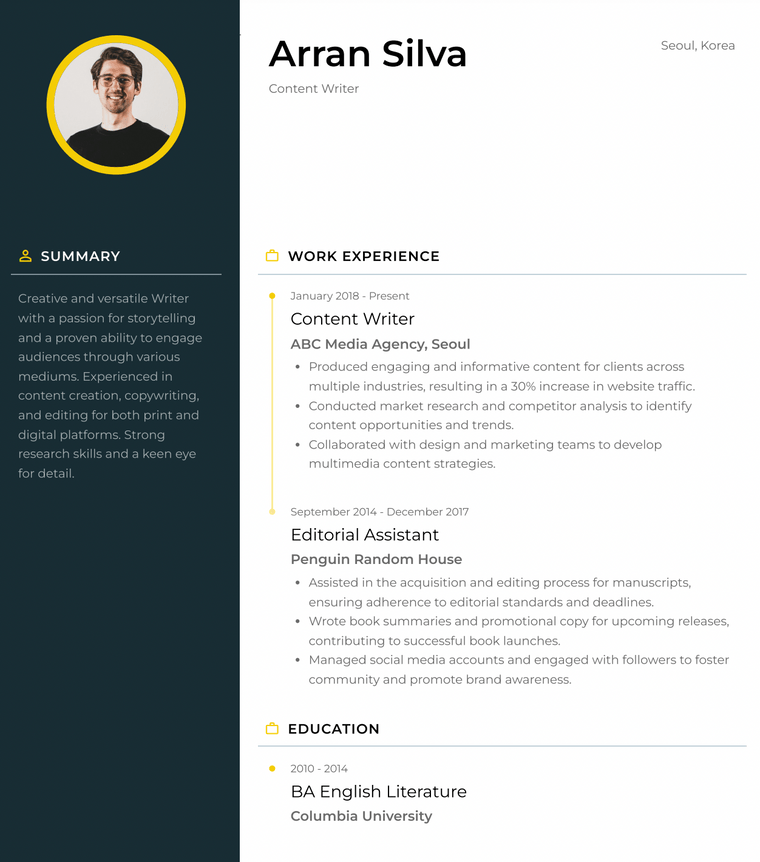
Korean Resume Example for Executives
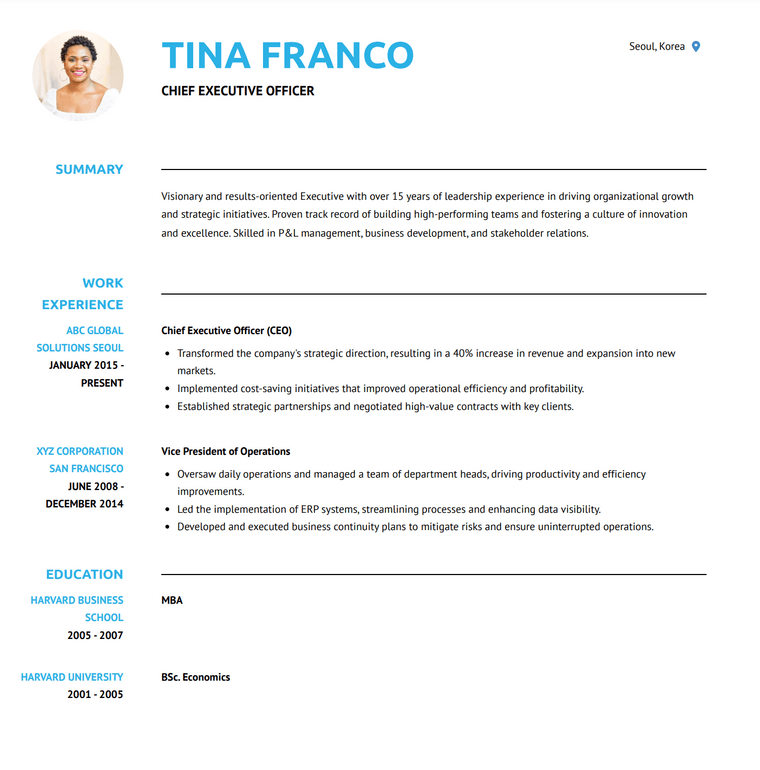
Korean Software Engineering Resume Example
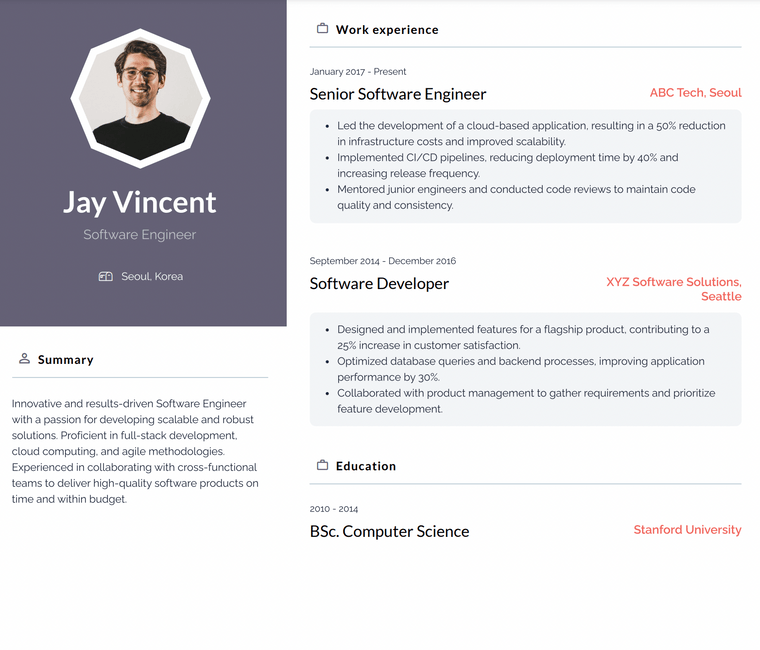

Korean Designer Resume Example
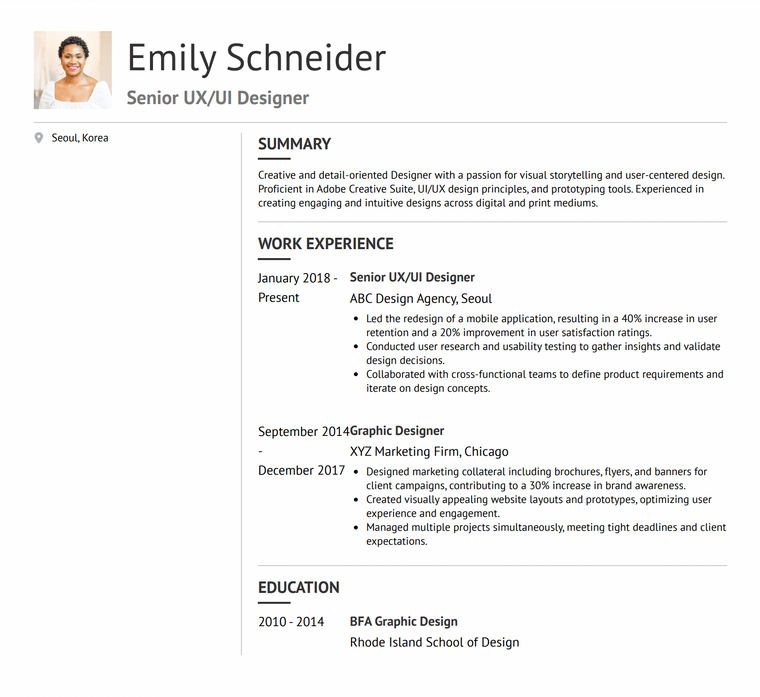
Project Management Resume for Korea
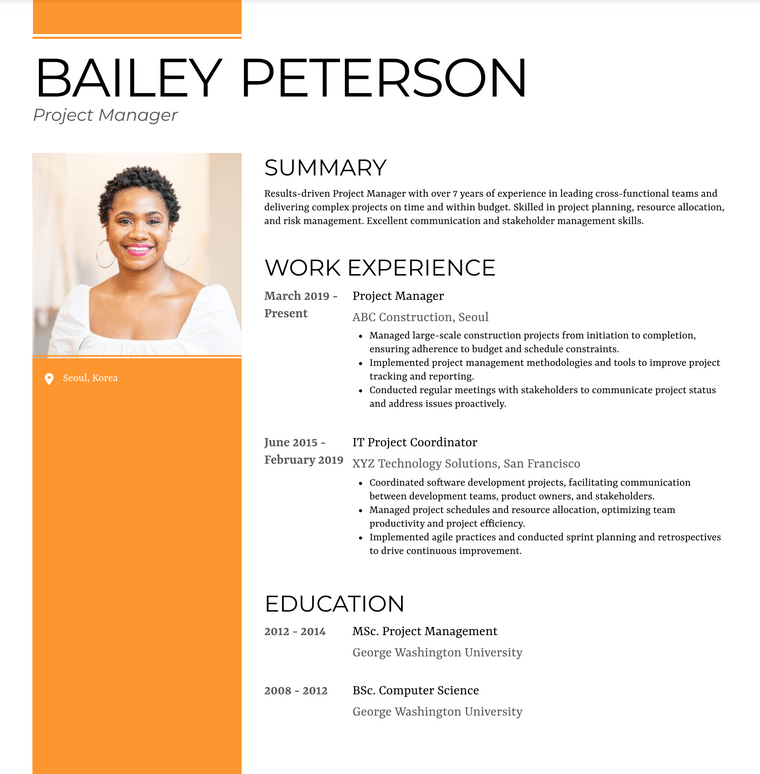
Retail Korean Resume Example
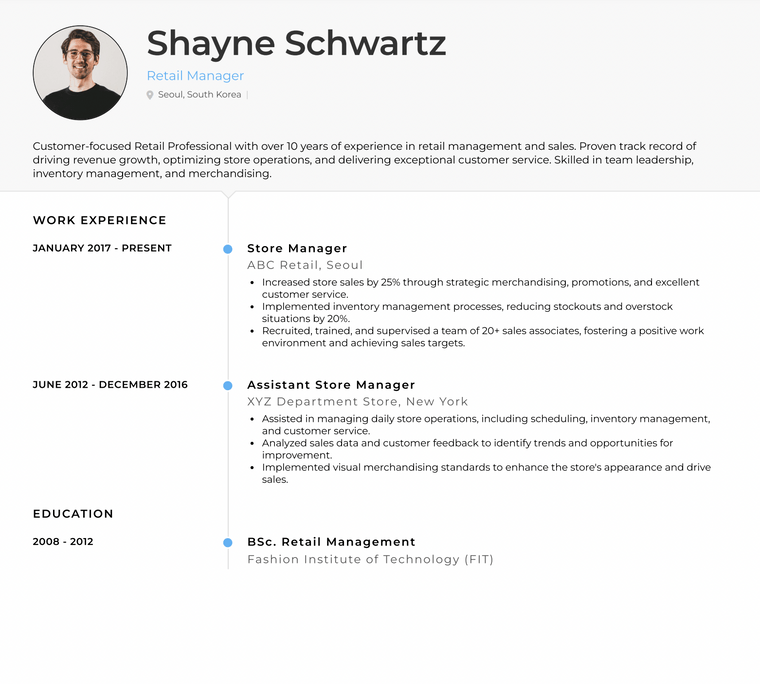
Korean Resume Example for Teachers
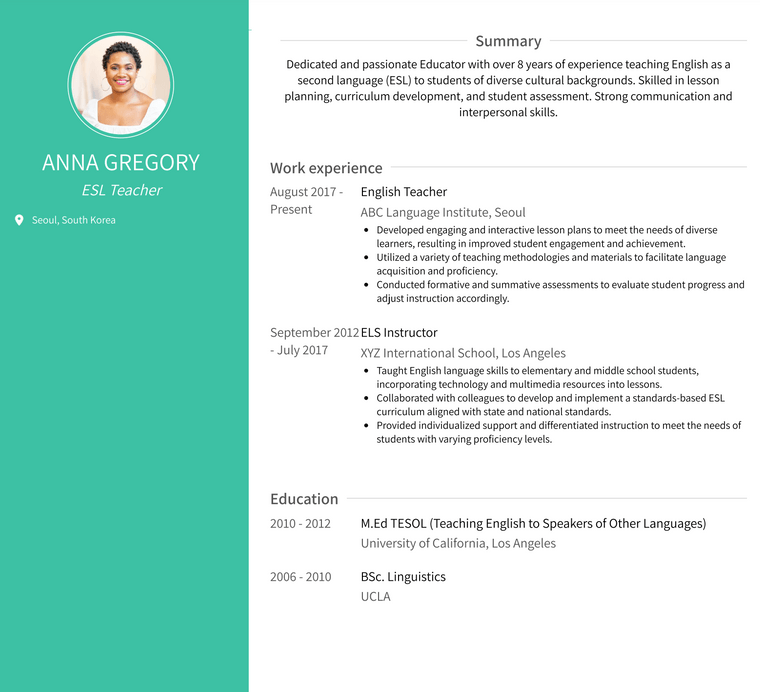
Is a Korean Resume Format Different from An American Resume Format?
In terms of format, an American resume is essentially the same as a Korean resume. The main difference is in the amount and type of information you provide in a Korean resume – you may be expected to include a photo of yourself, and additional personal information such as your marital status or nationality. Read each Korean job description carefully to understand what information they’re looking for on your resume.
How to Convert a European CV to a Korean Resume
The formats of a Korean resume and a European CV don’t differ greatly. The main difference you’ll find is that, for a Korean resume, you may want to include a photo of yourself, which is discouraged – or even outright banned – in many European countries.
You should also take care to include only the facts in your Korean resume. A hiring manager in Korea is only interested in what you can bring to the table, and won’t always appreciate embellishments such as your personal feelings or anecdotes about roles.
How Long Should my Korean Resume be?
A Korean resume should be no longer than 2 pages. If you’re having trouble condensing your work history into that length, try including roles only from the last 10 years, or editing your work experience section to only include the most relevant and important information.
If you’re struggling to edit your resume into 2 pages or less, a resume review can help pinpoint weak areas and allow you to find the most important areas of your resume to highlight.
Should I Add a Photo to my Korean Resume?
Yes, it’s expected for applicants to include a photo with their resume in Korea. While this isn’t a legal requirement, your resume is more likely to be ignored or passed over if you don’t include a photo, because hiring managers will assume you don’t understand their hiring practices.
Is it a Good Idea to List Marital Status on a Resume for Korea?
No, including your marital status on a resume for Korea isn’t necessary, and employers would consider it strange, outdated, or superfluous.
Should I List My Nationality on a Korean Resume?
If you’re applying for a job in Korea as a foreigner, list your nationality and visa status. This way, employers can easily gauge whether you’ll be able to work long-term and whether they need to sponsor a visa. If you’re a Korean citizen or resident, you won’t need to include your nationality.
Can I Lie on My Korean Resume?
As always, you should never lie on a Korean resume! Lying on a resume only ever results in disappointment for both yourself and your employer.
If you’re thinking of lying on your resume because you don’t know how to make your experience shine, a better option is to consider resume writing services. VisualCV’s professional resume writers are well-versed in Korean resumes and can make sure your resume stands out in all the best ways.
Copyright © 2024 Workstory Inc.
Select Your Language:

Speak Languages Better
We value your privacy. We won't spam your wall with selfies.
To learn more see our Privacy Policy and Terms of Service .
Free Language Learning Tools
Free Audio Dictionary
- Resume (재개하다)
How to say "Resume" in Korean (재개하다)
We have audio examples from both a male and female professional voice actor.
Practice saying this sentence
Female Voice
How to say "resume" in other languages, more resources.
Most Common Phrases
Share us on social media:
- google+
Speechling Comprehensive User Guide Our Mission Speechling Scholarships Meet the Team White Paper Pricing Community
Spanish Blog French Blog English Blog German Blog Italian Blog Portuguese Blog Russian Blog Korean Blog Japanese Blog Chinese Blog
Free Dictation Practice Free Listening Comprehension Practice Free Vocabulary Flashcards Free Language Quiz Free Fill in the Blank Exercises Free Audio Dictionary All Tools
Social Links
Privacy Policy Terms of Service Speechling uses Flaticon for icons.
Speechling for Education Careers Affiliate Marketing Contact

Steven S. Bammel, PhD | Professional Korean-to-English Translator
Reliable, confidential, fast, and accurate | 20+ years of experience
Guidelines for Preparing a Resume/CV and Cover Letter/Self-Introduction Letter for Getting a Job in Korea
- Nojeok Hill
- April 14, 2014
As Korean companies expand their operations on the world stage, they are hiring a growing number of non-Koreans for positions both in Korea and overseas. The number of non-Koreans chasing such jobs continues to outpace supply though, especially at the entry level, and so applying effectively is more important than ever.
Unless you’ve networked your way to an unpublished position (it happens!) or have unique talents that would give you global competitiveness just about anywhere, you will have to do your homework and prepare adequately for the process in advance.
I’ve previously answered some questions regarding the job search effort:
- Considerations of Current Location When Applying for a Job in Korea
- Reality-Based Answers to Questions About Getting a Job in Korea
We’ve also got the two following free Special Business Reports posted on Korea Business Central.
- The KBC-McKinney Consulting Webinar: “Working with Executive Recruiters and Planning Your Career in Korea”
- “A Map to a Career in Korea”, by Jared Muloongo
Focusing on seekers of entry-level or slightly higher positions, this article discusses the specifics of preparing key documents of the application based on questions I’ve received many times from KBC members and others.
1. What are the key differences between applying to a Korean company in Korea and a multinational company in Korea?
If you’re applying to a multinational company, your documents can generally follow international standards for job applications and you won’t need to adapt your pitch to Korean procedures, formats and sensibilities as much.
Generally, multinational companies are more likely to hire through recruiters, whereas Korean companies will have on-the-ground hiring departments that primarily handle this and they will follow Korean norms.
But appearances can be deceiving since some multinational companies allow their Korean operations to run fully (or nearly fully) on Korean lines. For example, even though Homeplus is owned by Tesco of the UK, the Korean office is more Korean than international (probably more Samsung than anything else, since it is run by former Samsung executives), even though a few foreign executives are dispatched from the UK. I’m told this is how Amway Korea operates, too. Therefore, those multinational companies where the Korean office is its own operation, rather than a small extension of a supra-national organization, you are likely to find yourself going through Korean processes when applying for lower-level jobs.
Keep in mind that even if you are applying to a Korean company, as a foreigner, you’re still an unusual hire. Therefore, the hiring for these positions is done in a much more ad hoc way, rather than the twice-yearly hiring that many of the large Korean conglomerates schedule out in advance for their Korean applicants. Because of this, there is a lot more scope for you to take the initiative in the job search process, such as by finding jobs through networking, by reaching out to the hiring department personally, or by being creative (in a good way!) with the formats, information and procedures Korean applicants would otherwise be expected to follow.
2. What should go into my resume or CV?
Koreans resumes typically include a small photograph. This should be a head shot similar to what you’d submit with a passport application and not a family or vacation photo. It goes right up at the top of the first page, usually in the right corner.
Unless you’re closer to 50 or 60 than 25, I’d suggest you put your birthdate at the top, too. This may be a no-no for companies to ask back home, but the Koreans you are applying to would like to know (whether they come out and say it or not). Besides, if they’ve asked for your foreigner registration number or a copy of your passport, they’ll know your birth date anyway. As with anywhere, but perhaps to a greater degree in Korea, being young works in your favor for entry-level positions.
Include your nationality and visa status, if an advantage (see below).
Other than that, include the standard stuff, such as education, work experience, and other professional skills and interests. Be specific so that your readers can know exactly when you were working or studying and look up your university and previous companies on the Internet by name.
You may not want to include work experiences that Koreans might misinterpret. For example, you’re unlikely to get many brownie points as a “go-getter” if you mention your university work experience at Burger King. Back home, having a part-time job during high school or college shows a strong work ethic; in Korea, it can lead to unhelpful questions and assessments of you.
Most positions that Westerners from English-speaking countries apply for leverage English skills and your potential employer may not care that much if you speak Korean. (see also Reflections on the Benefits of Learning Korean to One’s Career in Korea ) Still, it’s good to show your commitment to Korea by including any Korean-language courses you’ve graduated from, as well as other Korea-focused language or business certificates (the KBC Professional Certification Program is a great attention-getter!) You might even include experiences you’ve had with Koreans back home, such as volunteering with Korean student organizations there.
If you’ve been in Korea for very long, be sure to mention how long; the longer the better, since this shows your commitment to staying around and not leaving the position early because you got tired of Korea. If you’ve been off the beaten track in Korea, mention your travels briefly. If you like Korean soju or makgeolli , you might even mention this, as it’s a great talking point and tells the company you’ll be willing to join and participate in functions with alcohol (usually a good thing, though not as big a deal as in years past).
If there are online materials about your professional or academic experience relevant to the role, including a link to an online portfolio or to actual certifications can be helpful. It can’t hurt to include a link to your LinkedIn profile, also.
When Koreans prepare their resumes, they invariably include a few lines about hobbies and other personal interests. I would recommend you do the same, but don’t overdo it, such that your company thinks you’ll be so focused on the weekend that you won’t be willing to put in long hours during the week or that you’ll be unavailable for weekend work, as it arises. (BTW, if you’re not willing to work more than the standard 40 hours per week, you might reconsider whether Korea’s the right place for you!)
Your resume in Korea will not be too long even if it has a bit more information than you might ordinarily put on a resume back home, but I’d still suggest you keep it at no more than two pages.
3. What should go into my cover letter and should I translate it to Korean?
Koreans call the cover letter a “self-introduction letter” and this is where you get past the raw facts to show why you’re the best person for the job. This is not the time to list out how you want the work to help you; this is where you point out how your skills will benefit the company. The self-introduction letter is also not just a regurgitation of your resume but should emphasize your fit and strengths concisely.
Korean self-introduction letters sometimes go many pages, but I wouldn’t recommend this at all. If you’re writing the letter in English, a Korean recruiter (even one with good, but not native, English skills) can get bogged down in a lot of words.
I recommend translating your self-introduction letter to Korean; making it short will help you to keep the translation costs down, too. One thing to keep in mind when preparing your letter in Korean is to avoid creating unreasonable expectations of your Korean skills, or to think that this is a deal maker anyway (see link above about learning Korean). The purpose for presenting a letter in Korean is to help the recruiter get quickly to the information in your background that’s relevant without a language barrier and to help you show an extra level of commitment to the position through having made this effort. If your Korean skills are not fantastic, it would be reasonable to include a sentence in the letter mentioning this. The HR person will understand then that you had the document translated, which can still show your sincerity, especially if you include a few words (not a lot!) about what Korea means to you personally. It never hurts to mention that you’re willing and eager to learn more about Korea and Korean ways, too.
One more selling point can be your visa status. If you’re in Korea on a visa that lets you work in-country without being sponsored by your employer, this both shows your commitment to Korea and takes a burden off your employer. Not only can the HR people avoid the hassle of paperwork, but the company also isn’t legally responsible for your good behavior in Korea. Therefore, if you have one of these visas, mention it both in your resume and cover letter. (see also Answers to Top Questions about Business Visas in Korea )
There’s certainly more to the job application process than a good resume and cover letter, but the guidelines above will help you make the best impression at this stage of the application process.
Tags: get a job Korean Business Drivers
You may also like...
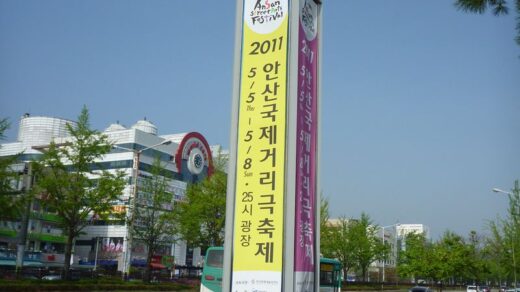
The 2011 Ansan Street Arts Festival
May 9, 2011

Programs for Counting Words in Multiple Files
November 30, 2009

The Short Walk Home From Work in Ansan
March 16, 2011
- Next story Sunset Over Ansan and Over Two Hundred Extra Empty Bedrooms
- Previous story “A Map to a Career in Korea: What You Need to Know!”, by Jared Muloongo
Steven S. Bammel, PhD
BBA, Economics MS, Management Strategy PhD, Management Strategy

100 Most Common Korean Phrases and Words to Learn
Introduction.
Explore the magic that is the Korean language! Whether it's "annyeonghaseyo" (hello) or “kamsahamnida” (thank you), understanding a bit opens up a richer experience and helps you connect with locals effortlessly. Let’s jump into the adventure of language and culture in the heart of Korea and make everyday moments unforgettable!
Common Korean Phrases for Everyday Life (formal and informal)
When diving deep into Korean, it's like having two sets of social keys: the formal one for respectful conversations with elders, strangers, or at work, and the informal one for a friendly chit-chat with family or friends. Think of the formal mode as your neat, office-ready outfit, and the informal as your cozy weekend pajama. Pay attention to who you're chatting with - elders or supervisors get the polished version, friends and siblings get the casual one. Let’s take a look at some of the most common everyday phrases and their two versions:
1. Good morning.
Formal: 좋은 아침입니다. (joheun achimimnida.)
Informal: 좋은 아침. (joheun achim.)
Use the formal version when addressing someone older or in a more official setting. You’re good to go with the casual version if it’s for friends or someone younger.
2. Good evening.
Formal: 좋은 저녁입니다. (joheun jeonyeokimnida.)
Informal: 좋은 저녁. (joheun jeonyeok.)
Similar to "Good morning," choose the formal for elders or formal occasions, and the informal for friends or casual settings.
3. Goodbye .
Formal: 안녕히 계세요. (annyeonghi gyeseyo.)
Informal: 안녕. (annyeong.)
Use the formal version when someone from the group is staying, and the informal for casual farewells. Check out some other ways to bid farewell in Korean !
4. Nice to meet you.
Formal: 만나서 반갑습니다. (mannaseo bangapseumnida.)
Informal: 만나서 반가워. (mannaseo bangawo.)
Not a surprise at this point, but the formal phrase is for new acquaintances in official settings, while the informal is suitable for friends or someone of similar age.
5. Have a nice day!
Formal: 좋은 하루 되세요. (joheun haru doeseyo.)
Informal: 좋은 하루 되. (joheun haru doe.)
Express good wishes for the day ahead, with the formal version for elders or in more official situations.
6. My name is ___.
Formal: 제 이름은 ___ 입니다. (je ireumeun ___ imnida.)
Informal: 내 이름은 ___야. (nae ireumeun ___ ya.)
Introduce yourself with the formal form in professional settings or for strangers, while using the informal one for friendly introductions.
7. I’m sorry.
Formal: 죄송합니다. (joesonghamnida.)
Informal: 미안해. (mianhae.)
If you are ever in a more serious situation or you are talking to elders, the formal version is more appropriate, but if it’s just a casual apology, then the informal one should do.
8. What did you say?
Formal: 뭐라고 하셨어요? (mworago hasyeosseoyo?)
Informal: 뭐라고 했어? (mworago haesseo?)
It is not rude to ask back, but make sure you use the formal when speaking to someone older or in a formal context. The informal version is for friends or casual situations.
9. I understand.
Formal: 이해했습니다. (ihaehaetsseumnida.)
Informal: 이해했어. (ihaehaesseo.)
The formal version is your go-to when you're in a serious nodding situation. The informal, however, has a friendly “got it!” laid-back vibe to it.
10. I don’t know.
Formal: 모르겠습니다. (moreugetseumnida.)
Informal: 몰라. (molla.)
For polished scenarios, the formal version is the best way to say “I lack the knowledge.” The informal one is more like a casual shrug when someone asks a stumper.
11. Please wait!
Formal: 기다려 주세요. (gidaryeo juseyo.)
Informal: 기다려. (gidaryeo.)
The formal form is your polished request in professional lobbies, whereas the informal one is like tapping a friend on the shoulder, saying, “Hang on a sec!”
12. Just a moment, please.
Formal: 잠시만 기다려 주세요. (jamsiman gidaryeo juseyo.)
Informal: 잠시만 기다려. (jamsiman gidaryeo.)
The formal one is your pause button for those high-stakes meetings, but the informal one could be used during a chat with pals.
13. Bon appétit! (before a meal)
Formal: 잘 먹겠습니다. (jal meokgetseumnida.)
Informal: 잘 먹을게. (jal meogeulge.)
When you are ever in a posh dining setting, use the formal form, and the informal one, when you want to casually say “Let’s dig in!”
Basic Korean Words and Phrases
1. Hello/Hi
Formal: 안녕하세요 (annyeonghaseyo)
Informal: 안녕 (annyeong)
The situation makes the difference here again. The formal version is like a polite wave to someone you've just met, and the informal one works as a friendly nod to a buddy. Learn more about how to say "hi" in Korean here !
Formal / Informal: 네 (ne)
"네" is the key to the door of agreement. It opens both the formal and casual gates. There are, of course, more informal versions of how to say yes in, but always make sure you use them with people who are lower in the social hierarchy than you are. With them, instead of “네”, you can say “응” (eung) as well.
Formal / Informal: 아니요 (aniyo)
You can use 아니요 (aniyo) for all occasions. This is the most basic form of saying “no” and can be used by itself. If you want to go super informal, just drop the 요 (yo) from the end of the word and say 아니 (ani).
4. Okay/Alright
Formal: 알겠습니다 (algesseumnida)
Informal: 알았어 (alasseo)
The formal version is like saying, "I understand, sir/madam!", while the casual one is more like a chill "Got it!"
5. Thank you
Formal: 고맙습니다 (gomapseumnida)
Informal: 고마워 (gomawo)
The formal form is your go-to for official gratitude, while the informal is like a warm hug of thanks. 감사합니다 (kamsahamnida) is another well-known way of saying “thank you” in Korean. It uses formal and polite language, so it can be used in a formal setting or with strangers and people older than you. You can casually use this version of “thanks” for everyday life in Korea.
6. I'm sorry
Formal: 죄송합니다 (joesonghamnida)
Informal: 미안해 (mianhae)
Whether you accidentally stepped on toes or forgot a friend's birthday, use these to sprinkle a little apology magic.
7. Excuse me/Hey (to get someone's attention)
Formal: 저기요 (jeogiyo)
Informal: 저기 (jeogi)
When you're in a crowded place and need to navigate through or speak to someone without being overly familiar, "저기요" is a courteous way to do so. Think of it as a refined excuse-me in a bustling space.
Formal: 저 (jeo)
Informal: 나 (na)
The formal version, "저," is a refined introduction, reserved for official or formal occasions when you want to make a neat first impression. On the other side, "나" is your easygoing entrance to a casual conversation—a laid-back choice for friendly chats and informal settings.
Formal: 당신 (dangsin)
Informal: 너 (neo)
"당신" is akin to addressing someone with "sir" or "ma'am," ideal for more formal or respectful conversations. "너" is a go-to for casual chats among friends.
10. South Korea - 대한민국 (daehan minguk)
This term, meaning "The Republic of Korea," is your all-access pass to a world of sizzling street food, ancient palace tales, and the busting vibes of K-pop.
11. Korean language - 한국어 (hangugeo)
"한국어" is your magic wand for understanding K-dramas without the need for subtitles. Embrace it formally for language classes or casually when diving into linguistic adventures with Korean friends. It's the key to unlocking a world of communication in Korean!
Useful Korean Phrases for Getting Around
Exploring new places in Korea can be an exciting adventure if you know the right way. To ensure seamless navigation and interactions with locals, here are seven essential Korean phrases to assist you along your way:
1. Here - 여기 (yeogi)
Example: 여기에 앉아도 돼요. (yeogie anjado dwaeyo.) -You can sit here.
"여기" is a simple and essential term for indicating a location. Use it when pointing to or referring to a specific place that is close to you as the speaker.
2. Place - 장소 (jangso)
Example: 이곳은 아주 평화로운 장소에요. (igoseun aju pyeonghwaroun jangsoeyo.) -This place is a very peaceful location.
"장소" is a versatile term for any location or venue. It's commonly used when describing or referring to different places.
3. Right - 오른쪽 (oreunjjok)
Example: 오른쪽으로 돌아주세요. (oreunjjogeuro dorajuseyo.) - Please turn to the right.
"오른쪽" is used to indicate the right side or direction. It comes in handy for giving or following directional instructions.
4. Left - 왼쪽 (oenjjok)
Example: 왼쪽에 꽃이 있어요. (oenjjoge ggoci isseoyo.) -There is a flower on the left.
"왼쪽" is used to indicate the left side or direction. It's a practical term for providing directions or describing locations.
5. Forward - 앞으로 (apuro)
Example: 앞으로 나아가세요. (apuro naagaseyo.) - Move forward.
"앞으로" is a directional term indicating forward or ahead. Use it when instructing someone to proceed in a forward direction.
6. City - 도시 (dosi)
Example: 서울은 큰 도시에요. (Seoul-eun keun dosieyo.) -Seoul is a big city.
"도시" is commonly used to refer to a city. It's an essential term for discussing urban areas.
7. Country - 나라 (nara)
Example: 한국은 아름다운 나라에요. (hanguk-eun areumdaun naraeyo.) - Korea is a beautiful country.
"나라" is used to denote a country. It's a fundamental term for talking about different nations.
8. Train station / Metro Station - 기차역 (gichayeog) / 지하철역 (jihacheol yeok)
Example: 기차역에서 택시를 탈 거예요. (gichayeogeseo taeksireul tal geoyeyo.) - I will take a taxi from the train station.
"기차역" specifically refers to a train station, a crucial term when discussing transportation.
9. Bathroom - 화장실 (hwajangsil)
Example: 화장실 어디에요? (hwajangsil eodieyo?) - Where is the bathroom?
"화장실" is the term for a bathroom or restroom. It's a practical term for daily use.
10. How do I get here? - 여기 어떻게 가요? (yeogi eotteoke gayo?)
This question is your golden ticket to local insights. Perfect for engaging locals and getting the best tips on navigating Korean streets or finding hidden gems.
11. I'm looking for……찾고 있어요. (chatgo isseoyo.)
A useful phrase when you're on a mission, whether it's hunting down a cafe, finding a landmark, or searching for that perfect souvenir.
12. Where is the metro station? - 지하철역 어디에요? (jihacheollyeok eodieyo?)
This short but useful sentence will help you ask for directions to the nearest metro station, supermarket, or even the hospital. Use it when you need directions to key locations in the city.
13. I am lost. - 길을 잃었어요. (gireul ireosseoyo.)
Translating as “I lost my way”, this phrase can help you express your confusion or seek assistance when you're unsure of your location.
14. Turn right/left. - 오른쪽/왼쪽으로 돌아요. (oreunjjok/oenjjogeuro dorayo.)
Provide or follow directions by indicating the direction to turn when navigating streets or pathways. Whether you're directing a friend to the nearest cafe or following a local's instructions, this phrase is your guide to seamless navigation.
These practical Korean phrases will not only guide you on your journey but also enhance your interactions with locals, making your experience more engaging and enjoyable.
Korean Phrases for Shopping
Prepare for a shopping spree in Korea! Whether you're exploring souvenirs, updating your wardrobe, or looking for local delicacies, arm yourself with these must-know shopping phrases. They're your ticket to navigating the shopping scene like a pro!
1. Shop - 가게 (gage)
Example: 이 가게에서 신발을 살 거예요. (i gageseo sinbaleul sal geoyeyo.) - I will buy shoes at this shop.
"가게" is a versatile term for any kind of shop or store. It can refer to a clothing store, grocery store, or any retail establishment.
2. Cash - 현금 (hyeongeum)
Example: 현금으로 결제할게요. (hyeongeumeuro gyeoljehalgeyo.) -I will pay with cash.
"현금" refers to physical currency or cash. It's a common term used when dealing with transactions involving paper money or coins.
3. Credit card - 신용카드 (sinyongkadeu)
Example: 신용카드는 여기서 사용할 수 있어요. (sinyongkadeuneun yeogiseo sayonghal su iteoyo.) -You can use a credit card here.
"신용카드" specifically denotes a credit card. It's a widely accepted form of payment in various establishments.
4. How much is it? - 이거 얼마에요? (igeo eolmaeyo?)
Use this friendly and commonly used phrase when inquiring about the price of an item. It is a polite way to ask, suitable for both formal and informal settings.
5. Can I try this on? - 이거 입어봐도 돼요? (igeo ibeobwado dwaeyo?)
Employ this phrase when you want to try on a piece of clothing. It's a polite and versatile expression suitable for both formal and informal situations, making it handy for shopping.
6. Can you give me a discount? - 할인해 주실 수 있을까요? (harinhae jusil su isseulkkaoyo?)
When you're feeling a bit savvy and want to negotiate the price, use this polite expression to ask for a discount. It's appropriate for formal settings and may be used in certain informal situations.
7. Do you accept cards? - 카드로 결제할 수 있어요? (kadeuro gyeoljehal su isseoyo?)
In a world where cards are often more convenient than cash, this question is perfect for checking if card payment is accepted. It's suitable for both formal and informal contexts.
8. This one, please. - 이거 주세요. (igeo juseyo.)
When you've found the item you want to purchase, use this polite expression to ask for it. It's a courteous and versatile phrase suitable for various shopping situations, whether formal or informal.
These sentences cover common shopping scenarios, making them useful for navigating stores and making transactions as a beginner Korean learner. Remember to use polite language, as it is customary in Korean culture, especially when interacting in commercial settings!
Korean Phrases for Going Out
The vibrant Korean social scene is definitely a fun one to immerse yourself in. With these essential phrases for going out, you can make the most of your time:
1. Pub - 술집 (suljib)
Example: 이 근처에 좋은 술집이 있나요? (i geuncheoe joeun suljibi innayo?) - Is there a good pub around here?
When exploring the local nightlife or looking for a place to unwind with pals, "술집" is your go-to term, as it can refer to a cozy spot for a casual drink or a lively pub atmosphere too.
2. Party - 파티 (pati)
Example: 오늘 저녁에 파티가 있어요. (oneul jeonyeoge patiga isseoyo.) - There's a party tonight.
The term "파티" captures the spirit of joyous occasions, whether it's a birthday celebration, a festive event, or a casual get-together with friends.
3. Restaurant - 식당 (sikdang)
Example: 이 식당의 음식은 맛있어요. (i sikdang-ui eumsigeun masisseoyo.) - The food at this restaurant is delicious.
When discussing dining options, "식당" refers to a restaurant where you can sit down and enjoy a meal. It's a versatile term covering anything from casual eateries to fine dining places.
4. Friends - 친구 (chingu)
Example: 친구들과 함께 외식하고 싶어요. (chingudeulgwa hamkke oesikago sipoyo.) - I want to eat out with friends.
"친구" is a warm term for friends, and when combined with activities like dining out, it signifies socializing and spending quality time together.
5. Dance - 춤 (chum)
Example: 이 노래에 춰볼래요. (i norae-e chwobolllaeyo.) -I want to dance to this song.
When the music moves you, "춤" is the term for expressing that rhythm through dance.
6. Music - 음악 (eumak)
Example: 어떤 음악을 좋아하세요? (eotteon eumageul johahaseyo?) - What kind of music do you like?
Use the term "음악" when discussing musical preferences, sharing favorite tunes, or exploring the diverse landscape of melodies and rhythms.
7. I'd like a drink. - 술 좀 주세요. (sul jom juseyo.)
Whether you're at a bar, restaurant, or social gathering, use this phrase to order a drink in a casual way.
8. I'm hungry. - 배고파요. (baegopayo.)
When your stomach is growling and it's time to refuel, "배고파요" is the phrase to let others know you're ready for a delicious meal.
9. Is this seat taken? - 여기 자리 비었어요? (yeogi jari bieosseoyo?)
Whether you're at a cafe, restaurant, or any public space, this question helps you politely check if a seat is occupied before settling in.
10. I'm here with friends. - 친구들이랑 여기 왔어요. (chingudeulirang yeogi wasseoyo.)
When joining a social gathering or event, this phrase helps you convey that you're not alone but are accompanied by friends.
11. The food is delicious. - 음식 정말 맛있어요. (eumsik jeongmal masisseoyo.)
When the flavors delight your taste buds, "음식 정말 맛있어요" is the perfect way to compliment the chef and share your satisfaction.
12. It's so much fun! - 정말 재미있어요! (jeongmal jaemiisseoyo.)
Whether you're at a party, or any engaging event, this exclamation captures the thrill and enjoyment of the moment, adding positive energy to the atmosphere.
These versatile Korean phrases will help you navigate social situations, create connections, and make the most of your time out on the town!
Korean Phrases for Emergency
Sometimes travel comes with unexpected twists. Be prepared for unforeseen situations with these essential Korean phrases that can be your lifeline in times of need:
1. Doctor - 의사 (uisa)
Example: 의사를 만나야 해요. (uisareul mannaya haeyo.) - I need to see a doctor.
"의사" is the term for a medical professional, specifically a doctor. When you're discussing health matters, scheduling an appointment, or want to consult with a healthcare expert, feel free to use this term.
2. Ambulance - 구급차 (gugeupcha)
Example: 구급차를 불러주세요. (gugeupchareul bulleojuseyo.) - Please call an ambulance.
In emergencies, "구급차" refers to an ambulance. Use this term when urgently requesting medical assistance, especially in cases of accidents or sudden illnesses.
3. Hospital - 병원 (byeongwon)
Example: 병원에 가야 해요. (byeongwone gaya haeyo.) - I need to go to the hospital.
When you're discussing healthcare and medical facilities, "병원" is the term for a hospital. Use it in need of medical attention or when referring to a healthcare institution.
4. Insurance - 보험 (boheom)
Example: 여행 보험을 가입했어요. (yeohaeng boheomeul gaeiphaesseoyo.) - I have travel insurance.
When discussing risk coverage, "보험" is the to-go term for insurance. It can refer to various types of insurance, such as health insurance, travel insurance, or any other form of risk protection.
5. Police - 경찰 (gyeongchal)
Example: 경찰을 불러주세요. (gyeongchareul bulleojuseyo.) - Please call the police.
Use the term "경찰" when reporting a crime, seeking assistance in emergencies, or interacting with law enforcement authorities.
6. Help me! - 도와주세요! (dowajuseyo!)
If you find yourself in an urgent or distressing situation and need help, this phrase is a direct and powerful way to seek immediate assistance from those around you.
7. Call 119. -119에 전화하세요. (119e jeonhwahaseyo.)
119 is the emergency number in Korea for fire, ambulance, and rescue services, so memorize and use this number when reporting fires, medical emergencies, accidents, or when rescue services are required.
8. Can you help me? - 도와줄 수 있어요? (dowajul su isseoyo?)
When you need assistance and want to ask someone politely, this phrase is a courteous way to seek help.
9. It hurts. -아파요. (apayo.)
Use this phrase to express experiencing physical pain or discomfort, "아파요" is the easiest way to communicate your condition to others, especially when seeking help or medical attention.
10. I lost my passport. - 제 여권을 잃어버렸어요. (je yeogwoneul ilheobeoryeosseoyo.)
In situations where you've lost crucial documents, especially a passport, this phrase is essential when reporting the incident or seeking assistance in the process, so remember it well!
These crucial Korean phrases can be invaluable in critical moments, ensuring you can communicate effectively and easily access the help you need.
Common Korean Phrases in K-drama
1. Amazing / That’s crazy - 대박 (daebak)
Example: 이 음악은 대박이야! (i eumageun daebak iya!) - This music is amazing!
"대박" is a versatile phrase used to express amazement or excitement about something extraordinary or impressive.
2. The best, awesome - 짱 (jjang)
Example: 이 음식 정말 짱이에요! (i eumsik jeongmal jjangieyo!) - This food is really awesome!
"짱" is a slang term indicating that something is the best or awesome. It's often used informally among friends to express enthusiasm and praise for an outstanding event.
3. OMG/ No way - 헐 (heol)
Example: 헐, 진짜? (heol, jinjja?) - OMG, really?
"헐" is basically an exclamation you can say to express surprise, shock, or disbelief. This informal expression is often used in casual conversations to convey amazement or astonishment.
4. Haha or “LOL” (Only used in text) - ㅋㅋ (kk)
Example: 오늘 너무 재밌었어 ㅋㅋ (oneul neomu jaemisseosseo kk) - Today was so fun, haha.
"ㅋㅋ" is the Korean equivalent of "haha" or "LOL" in text messages. It represents laughter and is commonly used in online chats to express a lighthearted tone.
5. I love you - 사랑해 (saranghae) - informal / 사랑해요 (saranghaeyo) - formal
Example: 사랑해요, 내 친구. (saranghaeyo, nae chingu.) - I love you, my friend.
"사랑해" and "사랑해요" are expressions of love, with the former being casual and the latter formal. Use these phrases to express affection towards friends, family, or a romantic partner, depending on the level of formality.
6. Well, I don’t know - 글쎄요
Example: 글쎄요, 난 이번 주말에 뭐 할지 모르겠어. (geulsseoyo, nan ibeon jumale mwo halji moreugesseo.) - Well, I don't know what to do this weekend.
"글쎄요" is another casual expression, used in times of uncertainty. It's a versatile phrase suitable for both casual and more formal situations.
7. Really? - 그래? (geurae) / 진짜? (jinjja) / 정말? (jeongmal)
Example: 정말? (jeongmal?) -Really?
All of these words mean “really?” in English and are all used in the same context, so learn them all and use them to sound more natural. You might also hear them with a 요 (yo) at the end, such as, “진짜요” (jinjjayo).
8. How / What to do? - 어떻게? (eotteoke)
Example: 어떻게 해야 돼? (eotteoke haeya dwae?) - What should I do?
“어떻게" can be used when seeking advice, expressing confusion, or asking for solutions in various situations. It's an essential phrase for navigating uncertainties.
9. Like this - 이렇게 (ireoke)
Example: 이렇게 해 봐. (ireoke hae bwa.) - Try it like this.
When suggesting a particular way of doing something, "이렇게" is the word to go with. It's a handy phrase when providing guidance or instructions.
10. It’s a lie - 거짓말이야 (geojinmariya)
Example: 너 거짓말이야! (neo geojinmariya!) - You're lying!
"거짓말이야" is used to express disbelief or accuse someone of lying. It's a direct and straightforward way to address situations where truthfulness is in question.
11. Are you crazy? - 너 미쳤어 (neo michyeosseo)
Example: 너 미쳤어, 그런 짓을 왜 해? (neo michyeosseo, geureon jiteul wae hae?) - Are you crazy, why would you do that?
If you want to express shock or disapproval, "너 미쳤어" is a useful phrase to know. It's a colloquial way to convey strong emotions in response to surprising or irrational behavior.
12. Hey! - 야 (ya)
Example: 야, 여기와! (ya, yeogiwa!) - Hey, come here!
This informal word can help you get someone's attention and is often used among friends or in casual settings. It adds a friendly and direct tone to your communication.
13. Please - 제발 (jaebal)
Example: 제발 도와주세요. (jaebal dowajuseyo.) - Please help.
"제발" is used when making a polite request or pleading for assistance. By using it, you can add a sense of urgency and politeness to your appeal.
14. Fighting! - 화이팅 (hwaiting)
Example: 시험 잘 볼 수 있을 거야, 화이팅! (hiheom jal bol su isseul geoya, hwaiting!) - You can do well on the exam, fighting!
"화이팅" is a positive and motivational phrase, commonly used in various situations, from exams to challenging tasks.
In Korean dramas, when somebody finds out some exciting gossip, he or she will almost certainly say one of these three Korean words.
Numbers in Korean
In Korean you have not only one, but two counting systems: Native Korean and Sino-Korean numbers. Each system is used in different contexts, so understanding both is essential for smooth communication. Here's a brief intro to each:
Native Korean numbers are the traditional Korean counting system, and they are mainly used for counting items and age, whereas Sino-Korean numbers are derived from Chinese characters and are commonly used for counting money, telling time, and expressing dates, among many other things.
Native Korean
1 하나 (hana)
5 다섯 (daseot)
6 여섯 (yeoseot)
7 일곱 (ilgop)
8 여덟 (yeodeol)
9 아홉 (ahop)
Sino-Korean
10 십 (ship)
For example, 3 o'clock is 세 시 (se shi), so you use native Korean numbers to express the hours, but the date March 1st is 삼월 일일 (samwol iril), which uses the Sino-Korean system. Fun, isn’t it?
Understanding when to use each counting system is crucial for clear communication in Korean. So, whether you're counting apples or discussing the time, having both sets of numbers in your linguistic toolkit will serve you well!
Days of the Week in Korean
Rooted in hanja characters from China, each day of the week in Korean has its unique meanings like moon, fire, and water. Beyond mere weekdays, mastering these words is your key to planning reservations, meetings, and understanding the rhythm of everyday life.
1. Monday - 월요일 (woryoil).
The first 월 (wol) in Monday means “moon.” Guess what, the word 월 (wol) is also used as the nominator for each month in Korean!
Example: 월요일에 학교에 갑니다. (wollyoire hakgyoe gamnida) - I go to school on Monday.
2. Tuesday - 화요일 (hwayoil).
The syllable 화 (hwa) means “fire” and is shortened from the word 화재 (hwajae) meaning “fire” and “blaze” in Korean.
Example: 화요일에 친구를 만납니다. (hwayoire chingureul mannamnida.) - I meet my friends on Tuesday.
3. Wednesday - 수요일 (suyoil).
The first syllable 수 (su) means “water.” You can see it, for example, in words such as 수영 (suyeong), which means “swimming,” and 생수 (saengsu), which means “drinking water.”
Example: 이번주 수요일에 새로운 책을 읽어요. (ibeonju suyoire saeroun chaegeul ilgeoyo.) - I will read a new book this Wednesday.
4. Thursday - 목요일 (mogyoil).
For “Thursday,” it’s 목 (mok) which means means “wood.” Related to this is the word 목재 (mokjae) which means “lumber” or “timber.”
Example: 목요일에 운동을 합니다. (mokyoile undongeul hamnida.) - I exercise on Thursday.
5. Friday - 금요일 (geumyoil).
금 (geum) means “gold,” and it is also popular to refer to Friday nights as 불금 (bulgeum), which translates to “Fire Friday” as 불 (bul) means “flame.” 불금 (bulgeum) is a popular Korean slang term similar to TGIF in English.
Example: 금요일에 영화를 보러 갑니다. (geumyoile yeonghwareul boreo gamnida.) - I go to watch a movie on Friday.
6. Saturday - 토요일 (toyoil).
The first syllable 토 (to) means “soil.” You can apply the same “Fire Friday” slang to Saturday as well. To say “Fire Saturday,” you can say 불토 (bulto).
Example: 토요일에 가족과 시간을 보냅니다. (toyoire gajokgwa siganeul bonaemnida.) - I spend time with my family on Saturday.
7. Sunday - 일요일 (iryoil).
Did you know? The syllable 일 (il) means “day” but can also mean “sun.”
Example: 오늘 일요일 이죠? (oneul illyoil ijyo?) - Today is Sunday, right?
How Drops can help you learn everyday phrases and vocabulary in Korean
Embark on an exciting language-learning journey with Drops and unlock the wonders of the Korean language effortlessly. Our app is designed to make learning Korean enjoyable, effective, and easy. Here's how Drops can elevate your experience:
Playful and Engaging Learning
Drops turns language learning into an enjoyable adventure with gamified challenges and memorization gameplays. Say goodbye to dull lessons and hello to a playful, interactive experience with content uniquely curated for Korean learners . Learn useful terms in topics like “Traveling around South Korea”, “Kpop” or “Korean Food Ingredients.”
Vibrant Visuals
Immerse yourself in Korean culture through vibrant visuals. Drops takes you beyond vocabulary, offering glimpses into Korean customs, traditions, and cultural nuances, making your learning journey not just educational but also visually captivating.
Native Speaker Voices
Sharpen your pronunciation skills with the help of native speaker audio recordings. Choose between our resident native speakers and refine your accent and intonation easily, ensuring you speak Korean with confidence.
Efficient Review Tools
Drops keeps your learning streaks intact with efficient review tools. Reinforce your understanding of the Korean writing , phrases and words to build a solid foundation by answering Quiz Mode questions or reviewing terms in Dojo. This will make language acquisition a seamless process for you.

Whether you're a beginner taking your first step into the Korean language or someone looking to enhance your existing skills, Drops is the key to unlocking the joy of learning Korean. Dive into a world of vibrant visuals, engaging games, and authentic voices – start your Korean learning adventure with Drops today!

Zita Palik is our Hungary based Language Content Manager and an 80's music maniac.
"Love my fun language learning and practice with daily Drops sessions, and monthly Challenges to participate in, and quiz mode to test contextual learning - brilliant! So much thought, consideration and inclusivity has gone into the design and function of this app, I can't praise it highly enough."
"Great little learning app! I've learned at least 5-10 new words in Spanish in my first 5 minutes. Easy to pick up and thorough."
"Great language learning app! It helps you get daily words done in a short amount of time. I would highly recommend using drops to learn whatever language you want to learn."
"What an amazing app! I’ve tried several apps for language learning and I cannot recommend Drops enough. I don’t know how a short Drops session can teach me as much as 1 hour+ of focused use of other apps, it’s like magic."
"Amazing language learning tool. Excellent app for increasing vocabulary in your foreign language of choice. Useful for beginner, intermediate, and advanced learners. The repetition of the words makes them much easier to remember, and without the hassle of making your own flash cards. I have used Drops for two years now and have seen great results."
"Very engaging way of learning Yoruba in a stimulating way. Will be using to learn myself and to teach my child!"
"Less than a week in but using this alone with the popular one babbel working on German. When using just one app I got bored, babbel is not as fun. So using both at once actually let's my adhd do its thing but I still focused since I can switch easily between both apps and work in different areas. Also I like the quick little sessions makes me feel like I actually did something."
"So engaging. I speak Spanish well, but often forget words in conversation that I know I should know. This game is fun and quickly brings back vocabulary I may have put in the back of my brain after not using it for awhile. Case in point: I spent 11 years in construction, then went back to teaching in English and/or Spanish depending on the teacher/student"
"Amazing app"
"I have been desperate to find an app that really helps me learn Japanese and this is the best by far"
"I like that you can switch between different subjects and topics constantly and it’s really easy to learn a lot of vocabulary very quickly! This works perfect for me because I can learn a lot of words but then practice sentence structure with my grandmother whose from Croatia"
"Fantastic app great opportunity to learn languages on your spare time. Drops makes it easy to learn and retain words to formulate sentences."
"Best of the best. Awesome app in every sense"
"This app us the best and how I am doing Learning Ukraine is Helping me alot tnx"
"Definitely recommend! I'm using this to learn mandarin 10/10"
"Fun and interactive. Great for repetition!"
- Drops iOS | Android
- Scripts iOS | Android
- Droplets iOS | Android
- Visual Dictionary
- Available Languages
Work with Us
- Partnerships
How To List Languages on a Resume by Skill Level

3 key takeaways
- Your resume language skills describe your proficiency in writing and speaking different languages.
- Many employers show a preference for candidates who know multiple languages.
- Teal's Resume Builder can help you easily list your language abilities in your skills section, professional summary, work history, or all of the above.
When nine out of 10 employers say they rely on employees that speak a language other than English, including your language skills can be a competitive differentiator—provided you know how to list them levels on a resume.
This guide covers what language skills are, why it’s worth listing them on your resume, and how (and where) to include them on your document.
Struggling to land interviews? Try Teal’s free AI resume builder .
What are resume language skills?
Your resume language skills describe your proficiency in different languages—both spoken and written, highlighting your language fluency. On your resume, you’ll list:
1. The language
Example: German
2. Your level of language proficiency
Example: Professional proficiency
Listing your knowledge of foreign languages on your resume calls attention to your ability to communicate in multiple languages, which can be helpful in roles where you’ll interact with diverse clients, coworkers, vendors, or business partners.
How to list languages on your resume
With that groundwork in place, here’s a closer look at the steps to follow to write language skills on your resume:
1. Review the job description
When you’re figuring out how to make a resume , tailoring your document to a specific job description is the most important thing. Return to the job posting to review it with a fine-tooth comb and ask:
- Does the job description include language skills?
- If so, does it mention specific languages?
- Is the employer looking for a specific level of language proficiency?
If you don’t want to scan the job description yourself, Teal’s Matching Mode will surface important keywords and qualifications directly from the job posting so you have a better idea of what to include on your resume.
Your answers to the above questions will help you determine which languages to include and how to list them appropriately.
2. Identify your relevant language skills
After you review the job ad, determine which language abilities to include on your resume. With the job description as your guide, ask yourself:
- Do I speak and write the employer’s desired language(s)?
- Do I possess the desired proficiency level and language fluency?
If your answer to both of those questions is “yes,” then that language is worth listing on your resume.
If the job description says the employer is looking for bilingual employees or multilingual candidates but doesn’t mention a specific language, list all of your known languages and relevant proficiency levels to highlight your language skills.
3. Choose the appropriate resume section
Now for the big question: Where are you supposed to list languages on your resume?
You can include your languages in each of these resume sections:
- Skills section
List your languages and proficiency level in your resume skills section along with your other hard skills and soft skills.
In the skill section of Teal’s Resume Builder, click to add a new skill. You can sort them in alphabetical order or turn off that toggle and click and drag your skills into the order you want them to appear.

- Professional summary
If the employer specifically mentions being multilingual or a particular language, include your language skills in your resume summary so they’re featured prominently.
In Teal, click “Add Professional Summary” (or edit and existing one) to incorporate your language skills in your paragraph. Use the checkboxes to select which of your summaries to include on your resume.

- Work experience
If you used your language skills heavily in a previous job, include that information with your work experience bullet points to show how you’ve applied your language learning in a professional context.
In Teal’s Work Experience section, click “Add Achievement” or edit an existing bullet point to incorporate your language skills. You can also click the “Write with AI” button to automatically generate your bullet points with AI.

Dedicated language skills section
If you speak more than two languages, you can create a languages skills section that’s dedicated to your language abilities and proficiency levels.
Use Skills Categories in Teal to create a category for languages and drag your language skills into that category so they’re grouped together on your resume.

If the employer takes the time to include language skills in the job posting, it’s also worth mentioning your language skills in your cover letter.
An easy way to do this is to match a full job title and description to your resume and Teal’s AI Cover Letter Generator will write a cover letter for you.

4. Write your language and skill level
Once you’ve figured out all of the above, knowing how to write language skills on your resume is pretty straightforward. When including languages in your skills section (whether it’s your resume skills section or a dedicated language section), you’ll list your language and proficiency level like this:

When listing languages in your professional summary or resume bullet points , you’ll need to provide a little more detail. You can see what that looks like in the examples included in the following section.
Resume language skills examples
Here are examples of how to list language skills in the four different resume sections mentioned earlier:
- Language skills section
Resume language skills example: Skills section

Resume language skills example: Professional summary

TIP: If you’re struggling to write your own professional summary, Teal's Resume Summary Generator will automatically write a summary for you within seconds.
Resume language skills example: Work experience section

TIP: Teal’s Resume Bullet Point Generator will create impactful, metric-driven bullet points to highlight your biggest career achievements.
Resume language skills example: Language skill category

You can assign skill categories in Teal’s Resume Builder to group all of your skills by level, language, or any other category that makes sense.
Click “Add a Category” to create a new skills grouping and then drag your skills to the appropriate spot.

Should you include languages on your resume?
Here’s the short answer: yes. If you speak or write languages outside of your native language, those are helpful to include on your resume.
Benefits of including a foreign language (or languages) on your resume:
- Competitive advantage: While speaking a second or third language might seem natural to you, it’s not a skill many candidates possess. Your language abilities can help you stand out from other applicants.
- Cultural awareness: Particularly with more remote and hybrid work arrangements, work environments are becoming increasingly diverse. Comprehension of different languages demonstrates an understanding and appreciation of different cultures.
- Higher salary: 40% of multilingual employees say their language skills not only helped them land their jobs, but that they also led to earning 19% more than single-language speakers.
Which languages should you include on your resume?
There’s a lot to gain when you include language skills on your resume. But that doesn’t mean you should include Spanish or French just because you took a year of each in High School. At this point, those basic language courses won’t do much to benefit your career.
How to determine which languages to include on your resume:
- What is your language skill level? Including a foreign language on your resume indicates to the employer that you have current working proficiency with that language—meaning they’ll expect you can at least engage in basic written or verbal conversations. Only include a language if your skill level is proficient. You don’t need to be fluent, but you do need to be able to communicate at a basic level.
- How relevant are language skills to the job? Is speaking a second language pertinent to that position? Or does the position not require much foreign language use, communication with diverse groups, or people skills in general? Think about how pertinent your language skills are to the role.
- Does the job ask for specific languages? Similarly, take a close look at the job description (or use Teal to automate this for you) to see if the posting mentions several languages, desired foreign language levels, or specific languages the employer is looking for. If you possess what the company is specifically asking for, you can list language skills accordingly.
One more important thing to remember: You do not need to list the language your resume is written in, as your resume itself indicates you are fluent in that language. For example, if your resume is written in English, you don’t need to list English in your language skills section.
Understanding language proficiency levels
Noting your level of language proficiency on your resume helps employers understand how well you’re able to communicate in a specific language. But pinpointing your own level of proficiency can feel murky. Fortunately, you can refer to a language proficiency scale to determine your skill level.
Most popular language proficiency frameworks:
- Common European Framework of Reference for Languages (CEFR)
- American Council on the Teaching of Foreign Languages (ACTFL)
- Interagency Language Roundtable (ILR)
- Canadian Language Benchmarks (CLB)
And while LinkedIn isn’t necessarily a formal language proficiency framework, it’s another common option people use when defining their language skills on their profiles. Here’s a quick comparison of the language proficiency levels in each of these scales:

Not sure how to choose which language proficiency framework to use on your resume? Your safest bet is to choose one that uses words instead of numbers to describe your skill level. A hiring manager might not understand what “B2” means for your proficiency level, while “professional working proficiency” is unmistakable.
That said, if the job description mentions a specific proficiency level using one of the other scales, default to that scale to define your own language skills on a resume.
How to determine your language proficiency level
The above scales are helpful for understanding each language level—but it can still be hard to determine where your own skills fall on the spectrum. How can you tell if you have professional working proficiency or full professional proficiency?
Strategies to define your proficiency with foreign languages:
- Take online assessments: Many of the proficiency scales also offer resources and assessments to help you. Check out the CEFR self-assessment grids or the ACTFL can-do statements to get a better idea of your skill level.
- Review detailed descriptions: The chart above was a quick overview of the different scales. Each one offers detailed descriptions of each proficiency level. Those are worth checking out to get a clearer idea of what’s required to satisfy each skill level.
- Practice with native speakers: You can also put yourself to the test by exchanging messages or engaging in a conversation with proficient or fluent speakers. That’ll give you a solid idea of how capable you are of applying your language skills in the “real world.”
Struggling to keep your skills (or languages) straight on your resume? You can assign skill categories in Teal’s Resume Builder to group all of your skills by level, language, or any other category that makes sense.
Common mistakes to avoid when listing languages on your resume
You’re ready to list language skills on your resume. As you do so, keep an eye out for these three common mistakes:
- Skipping proficiency level: It’s not enough to just list a language. Include your language level to let employers know your proficiency. Make sure to stick with a consistent scale too. It’s confusing to hiring managers when you describe your skill level as “Intermediate” with one language and “Limited Working Proficiency” with another.
- Overstating proficiency: Lies have no place on your resume—and that includes your language skills. Be honest about your proficiency with each foreign language.
- Using design elements: While some resume writers might recommend using fancy graphics or charts to show your skill level, those design elements are difficult for resume parsers and applicant tracking systems (ATS) to process. Stick with simple text instead.
Use Teal to highlight your language skills
Whether you’re fluent or a conversational speaker, listing language skills on your resume is a great way to stand out from other job seekers—especially if the role requires using more than one language.
Teal’s Resume Builder can help you clearly include language skills on your resume with:
- AI features to automatically generate your resume summary and your metric-driven achievements to include with your work history
- Skills categories to organize and list your hard skills, soft skills, and languages
- Matching Mode to compare your resume to the job description and identify other keywords (or languages) to include on your document
Ready to get started? Sign up for Teal .
Frequently Asked Questions
How do you list language proficiency on a resume.
There are several common language proficiency scales you can reference to understand your skill level and list your actual proficiency, accordingly. You’ll list your proficiency right next to the language.
How do you put that you are bilingual on a resume?
You can mention you’re bilingual in your professional summary, skills section, or in your work experience bullet points. Make sure to get specific about the language(s) you know and your proficiency level with each.
What are the four levels of language proficiency?
Different proficiency scales use different levels. In general, you can use all the languages in following four levels: beginner, intermediate, advanced, and fluent.
Your resume language skills describe your proficiency to speak and write in different languages.
What’s the best way to describe bilingual skills on a resume?
Choose a standard proficiency scale and then stick with that when describing your language skills on your resume. For example, you might describe yourself as conversational, intermediate, proficient, fluent, or a native speaker.

Kat Boogaard
Related articles.

What is a CV? (Examples & Templates for 2024)

US Resume Format: Tips and Examples for 2024

How To Write an Executive Resume [Template + Samples]

We help you find the career dream.

- English (US)
How do you say this in Korean? resume
- Report copyright infringement

Was this answer helpful?
- Why did you respond with "Hmm..."?
- Your feedback will not be shown to other users.

- How do you say this in Korean? former job
- How do you say this in Korean? 영접하다
- How do you say this in Korean? seeking job
- How do you say this in Korean? recruitment
- How do you say this in Korean? emprego
- How do you say this in Korean? i love you
- How do you say this in Korean? 뭐라고 말하고 있습니까?
- How do you say this in Korean? hello
- How do you say this in English (US)? What is the time over there ?
- How do you say this in English (US)? 안녕하세요
- How do you say this in English (US)? konnichiwa
- How do you say this in English (US)? 4歳の日記です。)先週末家族みんなで⚪︎⚪︎公園のプールへ行きました。プールでたくさん遊んで、テントで休憩したりランチを...
- How do you say this in English (US)? No creo que sea verdad
- How do you say this in English (US)? 醉酒用英语怎么说
- How do you say this in English (US)? 先生
- How do you say this in English (US)? 你一个,我一个,他不在,留一个
- How do you say this in English (US)? hello
- How do you say this in English (US)? 一昨日
- How do you say this in Korean? you did well today
- How do you say this in English (US)? como se pronuncia sugar
The Language Level symbol shows a user's proficiency in the languages they're interested in. Setting your Language Level helps other users provide you with answers that aren't too complex or too simple.
Has difficulty understanding even short answers in this language.
Can ask simple questions and can understand simple answers.
Can ask all types of general questions and can understand longer answers.
Can understand long, complex answers.
Show your appreciation in a way that likes and stamps can't.
By sending a gift to someone, they will be more likely to answer your questions again!

If you post a question after sending a gift to someone, your question will be displayed in a special section on that person’s feed.

Ask native speakers questions for free
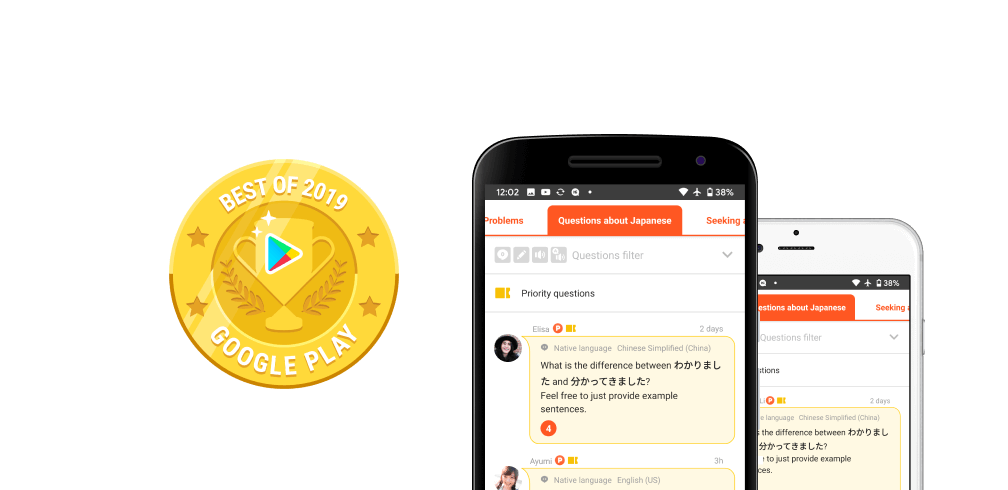
Solve your problems more easily with the app!
- Find the answer you're looking for from 45 million answers logged!
- Enjoy the auto-translate feature when searching for answers!
- It’s FREE!!
- How do you say this in ...
Résumé gaps don't have to kill your job search — here's what to say about them
- Slowdowns in some industries mean it's taking longer for some workers to land new roles.
- The pandemic helped normalize résumé gaps, with many workers experiencing employment disruptions .
- Career experts advise explaining gaps briefly and then pivoting to relevant skills and strengths.

When Vicki Salemi's father got sick, she cut back on her work as a freelance writer to spend time with him.
After he eventually died in late 2012, she was devastated.
"He was my best friend," Salemi told Business Insider.
As she tried to recover, she faced another problem: There was a hole in her résumé that made clear she hadn't been working for a while.
So Salemi, now a career expert for Monster, added a line to her CV to show that the monthslong gap existed for good reason. She didn't want anyone to wonder what she'd been up to — or question it and risk derailing her momentum in an interview she might otherwise be crushing.
"I didn't want to get asked about it because I was knee-deep in grief," she said.
Salemi isn't alone in having a résumé where the end of one job doesn't align neatly with the start of the next. Between layoffs , gig work, and the economic and social quagmire of the pandemic, many workers have blank spots in their formal work history . But that doesn't have to be a dealbreaker when it comes to finding another role .
The pandemic poked holes in work
The trick to dealing with résumé gaps is to have an explanation, career experts told BI. Sometimes, it's best to put the reason on the résumé itself, Salemi said. One bright spot for her after her father died was that she ultimately got the job.
"I remember when I had that phone interview with my future boss, she was like, 'Oh, I'm so sorry to hear that,'" Salemi said. "She just addressed it, acknowledged it, and then moved right on."
Julia Toothacre, chief career strategist at ResumeTemplates.com , told BI that her advice on résumé gaps is far different from what she would have said a decade ago. Breaks in work experience are often just a thing now and don't necessarily have to be papered over.
Related stories
That's because the pandemic threw so many people out of work and disrupted so much about the labor force that everything got a bit messy. In her experience, Toothacre said, most people doing the hiring are more sympathetic to the vagaries of the job market now.
"Any recruiter or hiring manager worth anything understands what's been going on in the world of work. It does not matter what sector you're in," she said.
It's OK to say you were laid off
Toothacre said that, unlike in the past, it's generally not as detrimental to be up front about a work drought on a résumé. That doesn't mean some people in charge of hiring won't ding applicants for it. But she said that itself can be a useful red flag for job seekers.
"If that's a situation that you're in, you don't want to work for that person anyway," Toothacre said.
She recommends that if you were laid off, note that on your résumé. Or, she said, you could add a section that talks about being off work for personal reasons like having to care for someone.
Depending on the grounds for the break, it can be wise to be somewhat circumspect, she said. If you were off because of a protracted illness, it might be smart not to go too deep into it. Even though employers shouldn't discriminate against people for, say, having young kids who need attention, it can happen.
Yet Toothacre said the decision by LinkedIn to let users add a career break to their profile has helped normalize the idea that not all formal work unfolds without interruption.
Salemi, from Monster, said in her experience more job seekers have gaps than don't. And many people tend to overthink how to address them, she said. Her advice is to be prepared to talk about the breaks — and use that explanation to move the conversation forward.
Even for workers who were fired, they could say something like, "I was the last one in, first one out," Salemi said. Then comes the pivot. One example she offered: "But the past three months really gave me clarity for this job I'm pursuing because my strengths are in sales," she said.
Don't dwell on the gap
Salemi said the key is to address the hiatus so an interviewer doesn't get stuck on it. For those who might have done something like get additional education, build their skills, or work on a side hustle, it can be OK or even beneficial to talk about it, she said.
There are other ways job seekers can downplay fallow spots in their formal work history. One is to perhaps not list start dates and end dates using months. Instead, Salemi said, consider using only years.
Another technique is to position the skills up top instead of first listing work history in reverse chronological order. That can help a busy recruiter focus on what's most important, Lee Woodrow, owner and principal consultant at Bigger Fish Executive Branding, previously told BI.
Salemi said it's no surprise that having too many gaps can be a problem. But for most breaks, explain it and move on. If possible, do it in a single sentence with two parts. The first portion is why the gap exists, and the second is why you're the best person for the job, she said.
"Especially if you're a top candidate, it's not necessarily a liability for you," Salemi said.
Watch: How tech layoffs could affect the economy
- Main content
- INNOVATION FESTIVAL
- Capital One
08-08-2024 IMPACT
U.S. to loan $1.45 billion to help a South Korean firm build the solar supply chain
Qcells and other manufacturers are pushing for tariffs to protect against what they say is below-cost dumping by companies in Cambodia, Malaysia, Thailand, and Vietnam that have ties to China.

JLG lifts are operated outside a Hanwha QCells solar plant October 16, 2023, in Cartersville, Georgia. [Photo: Mike Stewart, File/AP Photo]
BY Associated Press 3 minute read
The federal government is making its first loan to a crystalline silicon solar plant, loaning $1.45 billion to support a South Korean company’s bid to build up key parts of the solar supply chain inside the United States . The loan from the U.S. Energy Department, announced Thursday, will be key to funding a $2.2 billion complex that Qcells, a unit of South Korea’s Hanwha Group , is building. The company plans to take polysilicon refined in Washington State and make ingots, wafers, and solar cells—the building blocks of finished solar modules—in Cartersville, Georgia, northwest of Atlanta. President Joe Biden’s Inflation Reduction Act , besides offering an extra tax credit on American-made solar equipment, lets manufacturers earn incentives for every unit of polysilicon they refine and every wafer, cell, and module they make. “This loan is special because it’s one of the first facilities where we’re not just making modules, but we’re making cells and wafers as well,” Jigar Shah, director of the Energy Department’s loan programs, said in a telephone interview Wednesday with the Associated Press. “So we’re bringing a lot more of the supply chain into the United States.” Qcells in April began assembling modules in part of the complex, which will have a capacity of 3.3 gigawatts of solar panels each year. The plant in Cartersville currently has about 750 employees and is projected to have 2,000 when complete. Qcells says it’s on track to complete the wafer and cell portions of the plant by December. The company also has a $630 million plant in Dalton, farther northwest in Georgia, with a capacity of 5.1 gigawatts a year. That 1,800-employee plant was built without government loans. The company imports the cells for the Dalton plant. The Cartersville plant would be the largest ingot and wafer plant built in the United States, the Energy Department said. Between the Dalton and Cartersville plants, Qcells will produce enough solar panels to power nearly 1.3 million homes per year, reducing carbon dioxide emissions from power generation. Microsoft has contracted to buy a significant portion of the Cartersville plant’s output over eight years. Qcells must meet certain conditions for the loan, and Marta Stoepker, a company spokesperson, said Qcells is confident that it will meet the requirements. “The loan that we’re getting is going to be massively critical for us to stay on track with our goal of really onshoring the supply chain and making it in America,” Stoepker said. Still, the company said the Biden administration needs to stay committed to supporting domestic solar manufacturing in the face of a continuing surge of cheap imports from Asia, which has caused solar panel prices to fall. Qcells and other manufacturers are pushing for tariffs to protect against what they say is below-cost dumping by companies in Cambodia, Malaysia, Thailand, and Vietnam that have ties to China. Stoepker said the Biden administration also could help by refining guidance on the tax credit bonus for American-made equipment. Shah defended the administration’s efforts, saying supports for the industry are “providing a lot of stability for folks to invest.” He said the United States is on track to have a reliable domestic supply chain capable of meeting most of its solar panel needs. “The domestic demand for solar modules in 2026 is expected to be around 50 gigawatts. We’re expecting to produce about 40 gigawatts in 2026,” Shah said. “So that means 80% of the modules that we deploy in the United States in 2026 is expected to be domestic.” Senator Jon Ossoff, a Georgia Democrat who has been the foremost cheerleader for the Biden administration’s support of clean energy projects in the state, said the loan will “continue growing our economy and strengthening American energy independence.”
—Jeff Amy, Associated Press
Apply to the Most Innovative Companies Awards and be recognized as an organization driving the world forward through innovation. Early-rate deadline: Friday, August 23.
Explore Topics
- department of energy
- solar cells
- solar panel
- supply chain
- Tech No more wrangling your cat into a carrier: Pet telehealth is here
- Tech Toxoplasma gondii, a common parasite, could someday deliver drugs to the brain
- Tech Robotaxis are worrying China’s ride-hailing drivers as permits pick up the pace
- News This Florida city was hit hard when the 2008 housing bubble burst—now prices are falling again
- News Au revoir, Paris: How to watch the Olympics Closing Ceremony, including free options
- News Home insurance is spiking—and landlords plan to pass on some costs to renters
- Design Paris landmarks get Olympic makeover with colorful street art
- Design René Redzepi talks life after Noma and his new show, ‘Omnivore’
- Design How Vernon Dalhart recorded country music’s first big hit in 1924
- Work Life Overworked managers keep ghosting their teams
- Work Life 5 tactics Olympians and athletes use that can help you succeed at work
- Work Life 3 causes of self-doubt and how to overcome them
trending now in World News

Dozens of tourists fall ill with diarrhea, vomiting at five star...

Experienced pilot at the controls of Brazil plane that plummeted...

Two ancient North American structures crumble as tribes forewarn...

Would-be passengers say they missed doomed Brazilian flight over...

Jewish NYC resident violently arrested after taking selfie with...

Hero dad of 3 killed by 16-foot crocodile after saving wife's life

Mexican drug kingpin claims he was ‘taken against my will’ on...

Dubai princess announces shocking divorce on Instagram: 'Occupied...
Breaking news, seoul says north korea has again flown trash balloons toward south as bizarre psychological warfare continues.
South Korea’s military says North Korea is again flying balloons likely carrying trash toward the South, adding to a bizarre psychological warfare campaign amid growing tensions between the war-divided rivals.
South Korea’s Joint Chiefs of Staff said Saturday that the winds could carry the balloons to regions north of the South Korean capital, Seoul. Seoul City Hall and the Gyeonggi provincial government issued text alerts urging citizens to beware of objects dropping from the sky and report to the military or police if they spot any balloons.
There were no immediate reports of injuries or property damage.

North Korea in recent weeks has flown more than 2,000 balloons carrying waste paper, cloth scraps and cigarette butts toward the South in what it has described as a retaliation toward South Korean civilian activists flying anti-Pyongyang propaganda leaflets across the border.
Pyongyang has long condemned such activities as it is extremely sensitive to any outside criticism of leader Kim Jong Un’s authoritarian rule.
North Korea last flew balloons toward the South on July 24, when trash carried by at least one of them fell on the South Korean presidential compound, raising worries about the vulnerability of key South Korean facilities.
The balloon contained no dangerous material and no one was hurt, South Korea’s presidential security service said.

South Korea, in reaction to the North’s balloon campaign, activated its front-line loudspeakers to blast broadcasts of propaganda messages and K-pop songs.
Experts say North Korea hates such broadcasts because it fears it could demoralize front-line troops and residents.
The Koreas’ tit-for-tat Cold War-style campaigns are inflaming tensions, with the rivals threatening stronger steps and warning of grave consequences.

Their relations have worsened in recent years as Kim continues to accelerate the North’s nuclear weapons and missile program and issue verbal threats of nuclear conflict toward Washington and Seoul.
In response, South Korea, the United States and Japan have been expanding their combined military exercises and sharpening their nuclear deterrence strategies built around U.S. strategic assets.
Experts say animosity could further rise later this month when South Korea and the United States kick off their annual joint military drills that are being strengthened to deal with the North’s nuclear threats.

The resumption of the balloon campaign comes as North Korea struggles to recover from devastating floods that submerged thousands of homes and huge swaths of farmland in areas near its border with China.
North Korean state media said Saturday that Kim ordered officials to bring some 15,400 people displaced by the floods to the capital city, Pyongyang, to provide them better care, and that it would take two or three months to rebuild homes in flood-hit areas.
He has so far turned down aid offers by traditional allies Russia and China and international aid groups, insisting that North Korea is capable of handling the recovery on its own.
He accused “enemy” South Korea of a “vicious smear campaign” to tarnish the image of his government, claiming that the South’s media have been exaggerating the damage and casualties caused by the floods.

Advertisement
Around 100 Palestinians killed in Israeli air strike on school in Gaza, local authorities say
Around 100 Palestinians have been killed and dozens wounded in an Israeli air strike on a Gazan school, according to local authorities.
Israel's military has confirmed it attacked the school, but claimed it was harbouring Hamas militants.
What's next?
Ceasefire talks between Israel and its adversaries are expected to resume next week.
Around 100 Palestinians have been killed and dozens have been wounded in an Israeli air strike on a school sheltering displaced people in the Daraj district, east of Gaza city, according to Palestinian authorities.
Video from the site showed body parts scattered on the ground and more bodies being carried away and covered in blankets.
Empty food tins lay in a puddle of blood and burnt mattresses and a child's doll lay among the debris.
Gaza's government media office issued a statement calling the attack a "horrific massacre", adding that the strikes hit when people sheltering at the school were performing Fajr (dawn) prayers, leading to a large number of casualties.
"So far, there are more than 93 martyrs, including 11 children and six women. There are unidentified remains," said Mahmoud Bassal, a spokesperson for the Palestinian Civil Defence emergency services.
Israel's military, the Israel Defense Forces (IDF), disputed the casualty figures, saying they "do not align with the information held by the IDF".
The Gaza health ministry has so far not provided casualty details.
Ismail Al-Thawabta, director-general of the Gaza government media office, said the number of casualties was likely to rise as al-Ahli Hospital, where the wounded were taken, struggled to cope with the influx of patients, "most of which are in severe and critical condition".
He told Al Jazeera News that the Israeli army used three 2,000-pound bombs in its air strike.
Tens of thousands of displaced Palestinians have sought shelter in Gaza's schools, most of which have stopped functioning since the start of the war 10 months ago.
Gaza government media sources said this school was housing about 250 people, half of them women and children.
The IDF confirmed on X that it had attacked the Al-Tabi'een school in the Daraj neighbourhood, but claimed it was harbouring Hamas militants.
It said it struck a Hamas "command and control centre" that was "embedded" in the school, "which is used as a shelter for the residents of Gaza City".
"The headquarters was used by the terrorists of the terrorist organisation Hamas to hide and from there they planned and promoted terrorist operations against the IDF forces and the citizens of the State of Israel," the IDF said.
"Before the attack, numerous steps were taken to mitigate the risk of harming civilians, including the use of precise munitions, aerial surveillance, and intelligence information."
It did not immediately provide evidence supporting its allegations about the school, but later an Israeli military spokesperson claimed around 20 Hamas and Islamic Jihad militants were operating inside it.
"The compound, and the mosque that was struck within it, served as an active Hamas and Islamic Jihad military facility," Lieutenant Colonel Nadav Shoshani said on X.
He added that casualty figures given by the Hamas-run media office "do not align with the information held by the IDF, the precise munitions used, and the accuracy of the strike".
Hamas, meanwhile, denounced the strike as a "horrific crime that constitutes a dangerous escalation", saying it is yet another in a series of unprecedented war crimes and massacres.
It also accused the United States of being complicit by continuing to support Israel.
Izzat El-Reshiq, a member of Hamas's political office, said in a statement that the dead did not include a "single combatant".
Nabil Abu Rudeineh, a spokesperson for Palestinian President Mahmoud Abbas, also urged Washington to put an end to the "blind support that leads to the killing of thousands of innocent civilians, including children, women, and the elderly".
Ceasefire talks to resume next week
The air strike on the Gaza school came as the United States, an ally of Israel that has sent extra warships and jets to the region, urged both Iran and Israel to avoid escalating tensions between the two regional powers.
US Secretary of State Antony Blinken told Israeli Defence Minister Yoav Gallant in a phone call on Friday that an escalation in the Middle East was "in no party's interest".
There are fears Israel's war in Gaza could develop into a broader Middle East conflict after the recent killings of Hamas leader Ismail Haniyeh in Tehran and Hezbollah military commander Fuad Shukr in Beirut.
Both attacks drew threats of retaliation against Israel, but Iran and Hezbollah are yet to carry out any major strikes against Israeli targets in response.
Iran has claimed that Israel wants to spread war in the Middle East, while Hamas officials, as well as some analysts and critics in Israel, have said Israeli Prime Minister Benjamin Netanyahu has prolonged the fighting in Gaza for political gain.
Mr Blinken said a ceasefire agreement could result in the release of Israeli hostages taken by Hamas and "create the conditions for broader regional stability", the State Department said.
President Joe Biden laid out a three-phase ceasefire proposal in an address on May 31, which was later endorsed by the United Nations Security Council.
Washington and regional mediators have since tried arranging the Gaza ceasefire-for-hostages deal, but have consistently run into obstacles.
There has been only one, week-long truce in the Gaza fighting so far, which took place in November.
US, Qatari and Egyptian mediators have for months tried to secure a second one.
In a joint statement on Thursday, the three countries' leaders invited the warring parties to resume talks on August 15 in Doha or Cairo "to close all remaining gaps and commence implementation of the deal without further delay".
Mr Netanyahu's office said Israel would send negotiators "to conclude the details of implementing a deal".
EU chief Ursula von der Leyen expressed her support for the ceasefire talks on X.
"We need a ceasefire in Gaza now," she said.
"I strongly support the efforts led by the US, Egypt, and Qatar to help achieve the peace and stability the region needs."
Hamas has yet to publicly respond to the mediators' invitation.
17 schools destroyed last month
Earlier in the week, the Office of the United Nations High Commissioner for Human Rights (OHCHR) said Israel destroyed at least 17 schools last month .
"The UN Human Rights Office is horrified by the unfolding pattern of the Israel Defense Forces (IDF) strikes on schools in Gaza killing internally displaced Palestinians seeking shelter there," the office said.
More than 18 people were killed in Israeli strikes on two other schools in Gaza City only two days ago, Gazan authorities said, with Israeli authorities also claiming to have struck Hamas militants in those attacks.
During 10 months of war across the Gaza Strip, the military has found itself returning to some areas to fight the militants again.
The IDF said on Friday that troops were operating around Khan Younis, the southern Gaza city from which soldiers had withdrawn in April after months of fighting with Hamas.
"Enough!" resident Ahmed al-Najjar said.
"Have mercy on us, for God's sake, the young children and women are dying in the streets. Enough!"
After the military issued an evacuation order for parts of the city, AFPTV images showed a crowd of people flowing through dusty, damaged streets on foot or riding donkeys, as well as motorcycle carts piled with belongings.
"We've been displaced 15 times," said Mohammed Abdeen.
By Friday, the United Nations' humanitarian affairs office (OCHA) estimated "at least 60,000 Palestinians may have moved towards western Khan Younis in the past 72 hours", UN spokeswoman Florencia Soto Nino said.
The latest bloodshed in the decades-old Israeli-Palestinian conflict was triggered on October 7 last year when Hamas militants attacked Israel, killing 1,200 and taking about 250 hostages, according to Israeli tallies.
Gaza's health ministry says that since then, Israel's military assault on the Hamas-governed enclave has killed nearly 40,000 Palestinians and displaced nearly its entire population of 2.3 million.
Health officials say most of the fatalities have been civilian, while Israel says at least a third of the Palestinian fatalities were fighters.
The International Court of Justice found in January this year that Gaza faced a "real and imminent risk of genocide" as a result of the war, a finding which Israel denies.
- X (formerly Twitter)
Related Stories
'i want my children to become doctors': the push to get an education in a warzone.
Hamas looks for new leader amid Israeli strikes in Gaza and West Bank
Israeli air strike near United Nations-run Gaza school kills at least 15 people
- Defence Forces
- Occupied Palestinian Territories
- Unrest, Conflict and War
- World Politics
Search Al-Monitor
The middle eastʼs leading independent news source since 2012, israel faces anger over gaza school strike rescuers say killed 93.
Rescuers in Gaza said an Israeli air strike on a school housing displaced Palestinians killed 93 people on Saturday, sparking international condemnation despite Israel's insistence that it was targeting militants.
AFP could not independently verify the toll which, if confirmed, would be one of the largest from a single strike during 10 months of war between Israel and Palestinian militants since Hamas's October 7 attack.
The bombardment of Al-Tabieen religious school and mosque drew criticism from across the Middle East and beyond alongside calls for a ceasefire, after international mediators invited the warring sides to resume talks towards a long-sought truce and hostage-release deal.
Civil defence rescuers in the Hamas-ruled territory said three Israeli missiles hit the complex in Gaza City while people were performing dawn prayers. The military confirmed it had used "three precise munitions".

Mahmud Bassal, spokesman for the civil defence agency, said 11 children and six women were among the 93 who died at the school shelter, "and there are many unidentified body parts".
"They dropped a missile on them while they were just praying," said one woman, mourning over a dead child shrouded in a plastic body bag.
Israel's military said it had "precisely struck" Al-Tabieen, later adding that intelligence suggested "at least 19 Hamas and Islamic Jihad terrorists were eliminated".
Hamas denounced it as a "dangerous escalation", while the Palestinian group's Lebanese ally Hezbollah called it a "horrific massacre".

Iran, which backs both militant groups and had accused Israel of wanting to spread war in the Middle East following high-profile killings in Tehran and Beirut, condemned what it called a "barbaric attack".
"Those who were inside the mosque were all killed," said local resident Abu Wassim. "Even the floor above, where women and children were sleeping, was completely burned."
With nearly all of the Gaza Strip's 2.4 million people displaced at least once during the war, many have sought refuge in school buildings, which have been hit at least 14 times since July 6, according to an AFP tally.
- 'Intolerable' toll -
Israel has made similar accusations of armed activities after strikes on school shelters, while Hamas has denied using civilian facilities for military aims.

US National Security Council spokesman Sean Savett said Hamas has been operating out of schools, "but we have also said repeatedly and consistently that Israel must take measures to minimise civilian harm".
Jordan's foreign ministry said the timing was an indication of Israel's efforts to "obstruct and thwart" the latest mediation effort.
One of the mediators, Qatar, called for an "urgent international investigation", while Turkey claimed Israeli Prime Minister Benjamin Netanyahu wanted "to sabotage ceasefire negotiations".
Hamas's October 7 attack that sparked the war resulted in the deaths of 1,198 people, mostly civilians, according to an AFP tally based on Israeli official figures.
Palestinian militants seized 251 hostages, 111 of whom are still held in Gaza, including 39 the Israeli military says are dead.

Israel's retaliatory military campaign in Gaza has killed at least 39,790 people, according to Gaza's health ministry, which does not give details of civilian and militant deaths.
The European Union's foreign policy chief Josep Borrell said the school strike left him "horrified".
France said "Israel must respect international humanitarian law".
"For several weeks, school buildings have been repeatedly targeted, with an intolerable number of civilian victims," the French foreign ministry said.
- Measured response -
Netanyahu's office on Thursday said Israel would send negotiators "to conclude the details of implementing a deal", after the joint invitation from the United States, Egypt and Qatar. Hamas has yet to formally respond.
Hamas officials, some analysts and critics in Israel have said Netanyahu has sought to prolong the fighting for political gain.
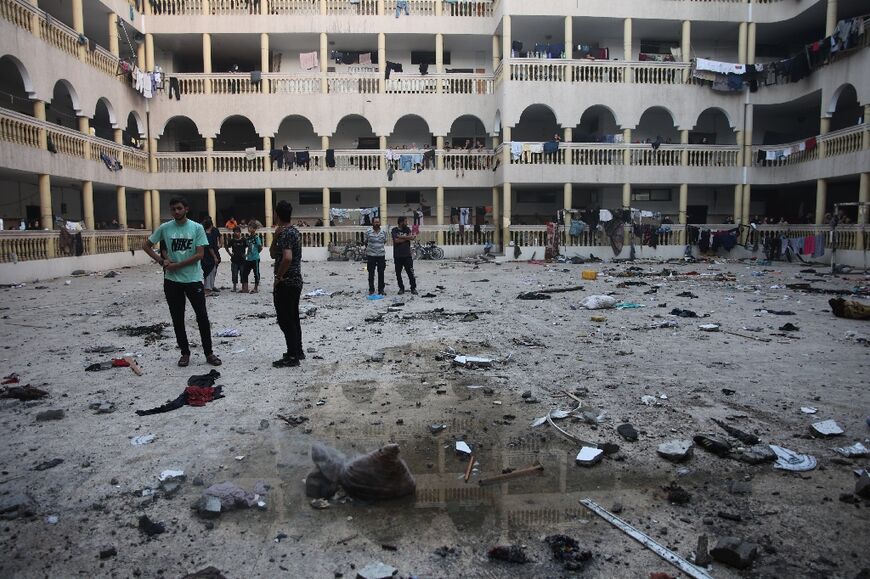
Anti-government protesters rallied again on Saturday in Israel's commercial hub of Tel Aviv and in the northern city of Haifa to pressure their leaders to secure the release of the remaining hostages.
Savett, the US spokesman, said the Gaza City strike "underscores the urgency of a ceasefire and hostage deal".
The mediators invited the warring parties to resume talks on August 15, after intense diplomacy aimed at averting a region-wide conflagration in recent days.
The Gaza conflict has already drawn in Iran-aligned groups around the region, but fears of a broader war have surged following the killings of two senior militants, including Hamas's political leader.
Iran, Hamas, Hezbollah and others have vowed retaliation, although they have yet to take action.
Asked what his message was to Iran, US President Joe Biden responded: "Don't", as he walked out of Saturday evening mass in Delaware.

Hezbollah, which has traded near-daily fire with Israeli forces throughout the war, on Saturday said it had fired "squadrons of explosive-laden drones" at an army base in retaliation for the killing of a Hamas commander in south Lebanon on Friday.
The killing on July 31 of Hamas's Ismail Haniyeh during a visit to Tehran had sidelined truce talks. Iran and Hamas blamed Israel, which has not directly commented.
Iran's mission to the United Nations on Saturday said the Islamic republic has "the legitimate right to self-defence" after its sovereignty was "violated".
"However, we hope that our response will be timed and conducted in a manner not to the detriment of the potential ceasefire," it said.
Related Articles

'Children torn apart': Israel strike rains hell on Gaza dawn prayers

Israel agrees to resume Gaza truce talks next week
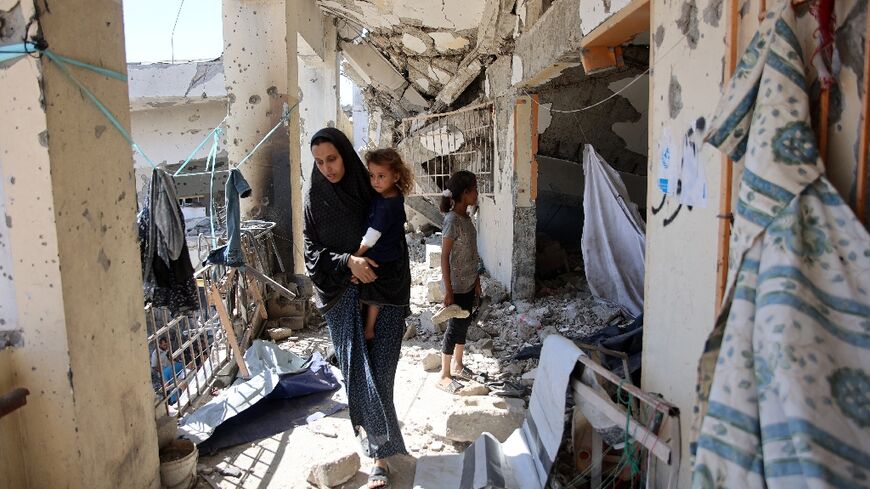
Foreign nationals told to leave Lebanon as war fears surge
Lawyers for Karen Read argue for dismissal of two charges at hearing

DEDHAM — A Superior Court judge is weighing whether to dismiss two of the three charges against Karen Read , who appeared in court Friday as her lawyers and the prosecution tangled over whether she could be acquitted of murder in the death of her boyfriend, Boston police Officer John O’Keefe.
The hour-long hearing in Norfolk Superior Court centered on a motion to dismiss filed by Read’s defense team following a mistrial last month in the high-profile murder case . In the time since the judge ruled the jury to be at an impasse on July 1, multiple jurors have come forward to say that during deliberations they actually had unanimously agreed Read was not guilty of the charges of second-degree murder and leaving the scene of an accident, and that they only remained deadlocked on a third charge of manslaughter by operating under the influence.
Though prosecutors have said they plan to retry Read , defense lawyers argued that it would be unfair to charge her again with counts that jurors had previously rejected . But prosecutors argued that jurors never officially returned a verdict, and so no decision was made.
Judge Beverly Cannone heard both arguments over the course of about an hour Friday, and said she would take the matter under advisement. She did not say when she would rule.
“This is double jeopardy,” argued Martin G. Weinberg, the longtime Boston-area appellate attorney who Read’s team brought on to handle these arguments. “Don’t make Ms. Read the first person in the history of the Commonwealth to face re-prosecution for murder by the same prosecutor’s office that tried her once — and failed to persuade the jury that she was guilty.”
In the small, wood-paneled courtroom where Read stood trial for two months, Weinberg gave a sweeping argument that the court should, at least, make further inquiries of the jurors. He evoked freedom philosophies of the Founding Fathers and the late US Supreme Court Justice Ruth Bader Ginsburg, and cited rulings from the Boston Marathon bombing case and the 1961 US Supreme Court decision Mapp v. Ohio, which involved how evidence can be introduced at trial.
Advertisement
Assistant District Attorney Adam Lally pushed back, saying there is no requirement for the court to “poll” each juror on their position on the individual charges. He said the jury did not return a verdict and the defense “had more than an adequate opportunity to be heard and object to the declaration of a mistrial in this case.”
“The two charges that the defense now complains of dealt with a simple choice: There’s a box for guilty and a box for not guilty. Neither was checked, neither was returned to the court at any point in time,” Lally said. “There is no verdict in this case.”
Immediately after Cannone declared a mistrial in the murder case on July 1, Norfolk District Attorney Michael W. Morrissey said his office would retry Read. Cannone has set a new trial date for Jan. 27, though she has also said she expects appeals of whatever ruling she makes on the motion to dismiss.
Prosecutors say Read , 44, of Mansfield, slammed her SUV into O’Keefe outside a Canton home early on Jan. 29, 2022, after a night of bar-hopping and heavy drinking. Read’s lawyers maintain she is being framed and that O’Keefe entered the home, owned at the time by a fellow Boston police officer, where he was beaten in the basement before his body was dumped on the front lawn.
Fueled by the dueling narratives and claims of corruption, the case devolved into a media frenzy. National news outlets ran pictures of Read in court, and crowds of her supporters — and some detractors — rallied outside the courthouse each day of the trial.

In the latest twist, Read’s defense team filed multiple sworn statements saying jurors had reached out to them to express concern about the mistrial, stating they actually wanted to acquit Read on certain charges.
They said they had also been confused about the manslaughter charge, which involved multiple layers: if the jury decided to acquit, they would have then also had to consider certain lesser charges that were listed on the verdict slip.
According to the most recent court filings, a juror called Read’s lawyer David Yannetti on July 31 to confirm that the juror had been accurately quoted in previous court documents and to reiterate that “the only charge on which the jury was deadlocked was indictment 2 (manslaughter).”
The juror told Yannetti, according to the filing, “No one thought that she hit him on purpose ... or even knew that she hit him.”
The juror, Read’s attorney’s wrote, “believes that other jurors have been reluctant to come forward because there is so much public and media attention focused on this case.”
By the time Read arrived at her hearing Friday, the crowds of supporters and opponents who have caused a media frenzy had swelled to the dozens outside.
Aidan Kearney, the blogger known as “Turtleboy” who champions Read’s cause, rallied pink-clad supporters through a bullhorn. A crowd of a couple dozen people advocating for Read’s guilt stood a few feet away, holding their own signs and chanting their desire to “lock her up.”
Emotions were running high by the time lead prosecutor Lally arrived to lusty boos from Read’s supporters.
Drivers honked their horns as they passed the crowd on High Street, some showing American flags through their sunroofs.
“If this lady goes to jail, this flag doesn’t mean anything,” said Joao Delgado, 63, a Canton resident and stone mason, as he held an American flag outside the courthouse.
“Nobody should be tried twice,” he said.
Tonya Alanez of the Globe staff and Globe correspondent Izzy Bryars contributed to this report.
Sean Cotter can be reached at [email protected] . Follow him @cotterreporter . Nick Stoico can be reached at [email protected] .

IMAGES
COMMENTS
One of our readers recently asked me to find out everything I could about Korean resumes because she needs to fill one out. So I did. Here's some great info to get you started: Best Search Term: 이력서 작성방법 (HowContinue reading Need to fill out a Korean Resume? Here's everything you need to know (in Korean).
Welcome to our comprehensive guide on how to say "resume" in Korean! Whether you're planning to visit Korea for work or are simply interested in expanding your language skills, understanding the various ways to express "resume" in Korean can be immensely helpful. In this guide, we'll cover both formal and informal phrases, and touch upon any regional variations if necessary.
We will provide you a thorough overview of Korean resumes and cover letters in this article, giving you the information and resources you need to produce polished and successful application materials. Resume Format: Korean resumes often adhere to a particular format. Start with a quality head shot of yourself, then include your name, contact ...
Learn how to write an effective resume in Korean with our comprehensive guide. Discover the essential items to include and get tips to make your resume stand out to Korean employers.
how i got a job in korea 🇰🇷 resumes, cover letters, tips Natalia Garza 114K subscribers Subscribed 465 7.3K views 5 months ago
"Learn how to craft effective Korean resumes and cover letters. Understand the format, and get tips for success in the South Korean job market.
Ready to learn "Resume" and 18 other words for Job Interview in Korean? Use the illustrations and pronunciations below to get started.
Struggling with how to write a resume for job opportunities in Korea? Learn essential tips from 'Korean Resume Guideline & Samples - 7 Things You Must Write!' to effectively showcase your skills and stand out to employers.
There are many job opportunities in South Korea, but first, you'll need to learn how to make a Korean resume. Some companies require both English and Korean resumes, Ziptoss will guide you in making your Korean resume.
Learn how to say it just like a native:https://speechling.comLink to this sentence:https://speechling.com/how-to/how-to-say-resume-in-korean-2782Male Voice:재...
Learn how to say resumé; CV in Korean, how to say it in real life and how you can use Memrise to learn other real Korean phrases.
The Sawon. Sunday, October 13, 2013. The Korean Resume - Part 2. We move along now to Part 2 of the Korean resume which covers the second page of the CV. Now remember that this template can be found here! It's available to everyone and can be customized and adjusted to your hearts content. On closer inspection there is not much information to ...
Applying for a job in South Korea? This Korea resume guide has the templates, tips, examples, and format requirements needed to write the perfect resume.
How to say "Resume" in Korean (재개하다). And how you can say it just like a native.
The key to including language skills on your resume is knowing how to correctly indicate your level of proficiency. In this article, we discuss what the different language levels are, how you can determine your own level of proficiency and how you should list language levels on your resume.
As Korean companies expand their operations on the world stage, they are hiring a growing number of non-Koreans for positions both in Korea and overseas. The number of non-Koreans chasing such jobs continues to outpace supply though, especially at the entry level, and so applying effectively is more important than ever.
Translation for 'resume' in the free English-Korean dictionary and many other Korean translations.
Common Korean phrases for everyday life: Hello - 안녕하세요 (annyeonghaseyo), Excuse me - 잠시만요 (jamsimanyo) and many more.
How do you say this in Korean? Resume. See a translation Report copyright infringement
Including multiple languages proficiency levels on your resume can help you stand out. Learn how to list languages on resume, including where and how.
In Korean, the word "이력서" is the standard term used for "resumé" in both formal and casual contexts. There are no specific expressions that make the translations formal or casual in this case, as "이력서" is the appropriate and commonly used term for a resumé in Korean regardless of the formality of the situation.
How do you say this in English (US)? レジ袋はご購入されますか? How do you say this in English (US)? We need to dispose of any expired items. or We need to dispo... How do you say this in English (US)? cuando usar do y doing? he visto oraciones que dicen "i go t... How do you say this in English (US)?
A gap in your work history can be unnerving, but often it's best to list a reason for the disruption on your résumé and move on.
The federal government is making its first loan to a crystalline silicon solar plant, loaning $1.45 billion to support a South Korean company's bid to build up key parts of the solar supply ...
South Korea's military says North Korea is again flying balloons likely carrying trash toward the South, amid the growing tensions between the war-divided rivals.
Local authorities say the air strike targeted displaced people sheltering in a school in the Daraj district of eastern Gaza during dawn prayers.
Republicans are attacking the Democratic vice-presidential nominee on his retirement timing and with allegations of "stolen valor."
Israel has agreed to resume Gaza ceasefire talks on August 15 at the demand of US, Qatari and Egyptian mediators, Prime Minister Benjamin Netanyahu's office said on Thursday, as regional tensions skyrocket over the war.Gaza's Hamas-controlled civil defence agency said Israeli bombardment killed more than 18 people in strikes on two schools on Thursday, as Iran accused Israel of wanting to ...
Rescuers in Gaza said an Israeli air strike on a school housing displaced Palestinians killed 93 people on Saturday, sparking international condemnation despite Israel's insistence that it was targeting militants.
The defense's request is premised on jurors who have come forward to say they unanimously reached not guilty verdicts on the charges of second-degree murder and leaving the scene of an accident.